Royal International Air Tattoo - 2009 (Photos)
Last Sunday I got up at the ungodly time of 4:30am to attend the world's largest military airshow; the Royal International Air Tattoo at RAF Fairford. I first went to this airshow two years ago and enjoyed it immensely - last year it was cancelled due to the weather so I was particularly looking forwards to it this time. I was eager to give my family's Canon 400D some proper use and had made a last minute purchase of a 55-250mm lens which thankfully arrived in time!
The gates opened at 7:30 and we arrived shortly before this which made a change from two years ago when we arrived just as the show was starting and hurriedly took our places as a 747 sauntered by! Annoyingly us early arrivals had a fair bit of a walk from the parking to the airfield and the weather was becoming increasingly wet, however we took our places at the front of the field just left of the grandstand which give very decent views of the action.
Before the show started at 9:30 I took a look at the static display which is quite extensive; I walked down it again after the show was over and still didn't manage to get to the end before leaving! Photography will thus be grouped static then flying, with annotations and further information of interest:
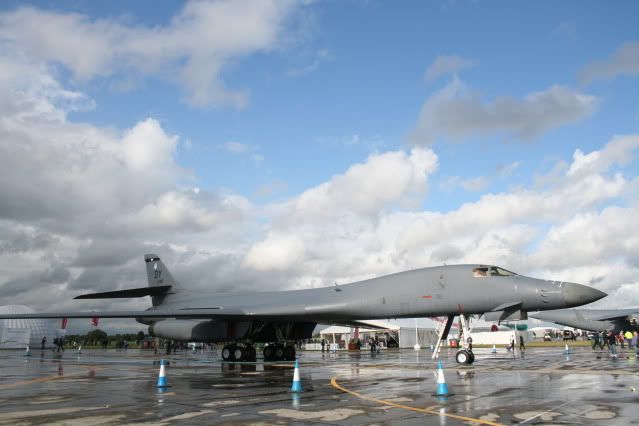
USAF B1-B Lancer.
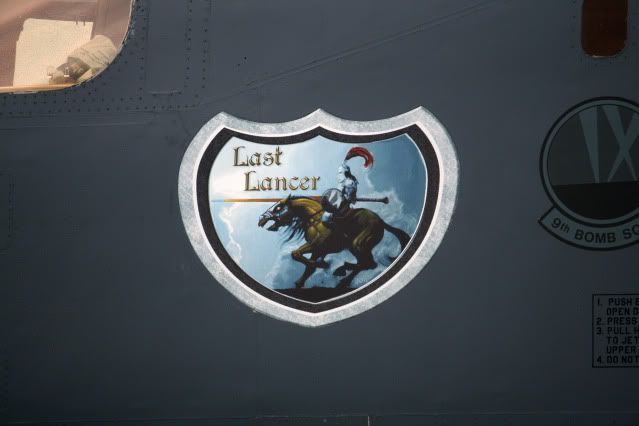
Closeup of the Lancer's nose art.
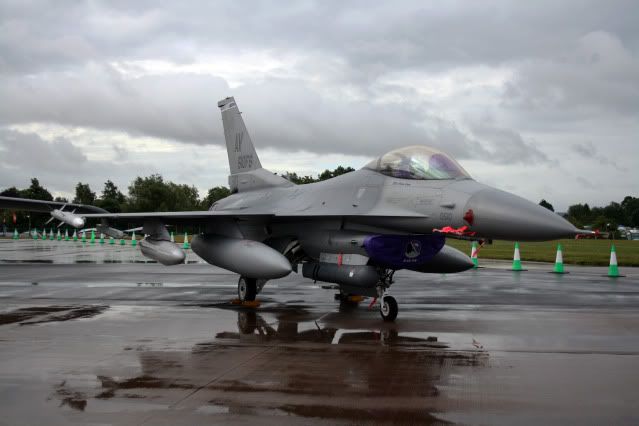
USAF Fighting Falcon.
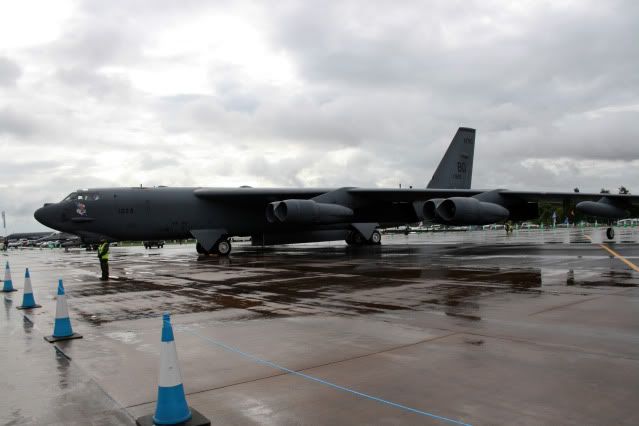
UASF B-52H Stratofortress.
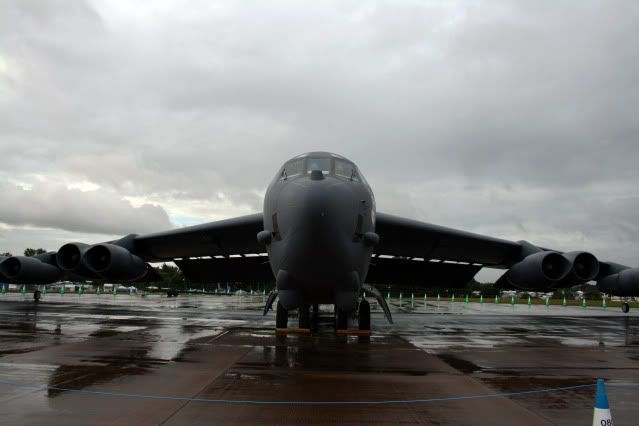
UASF B-52H Stratofortress.
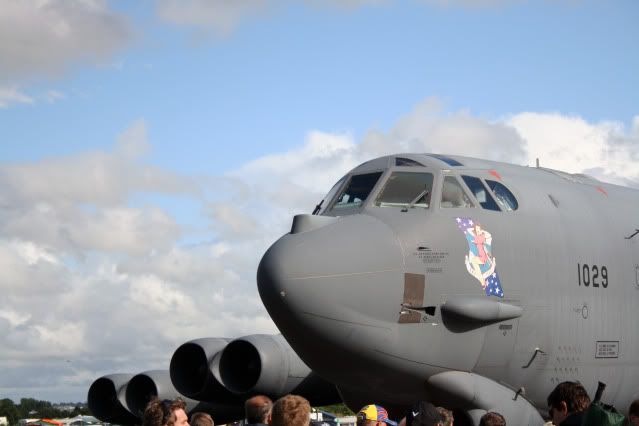
UASF B-52H Stratofortress.
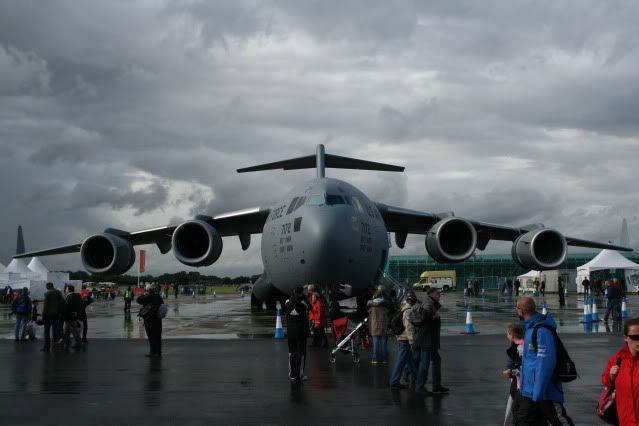
USAF C-17A Globemaster III.

USAF A-10 Thunderbolt II.
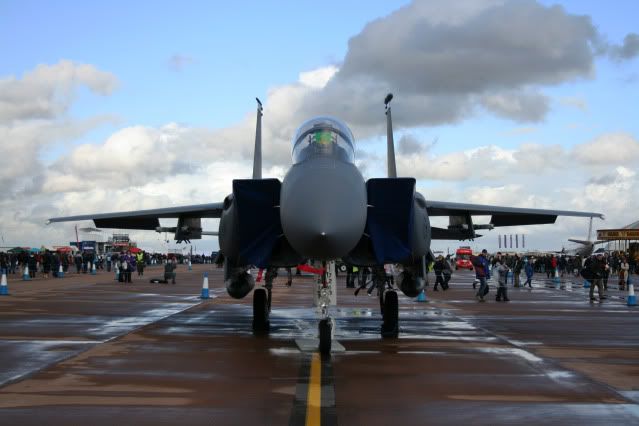
USAF F-15E Strike Eagle.
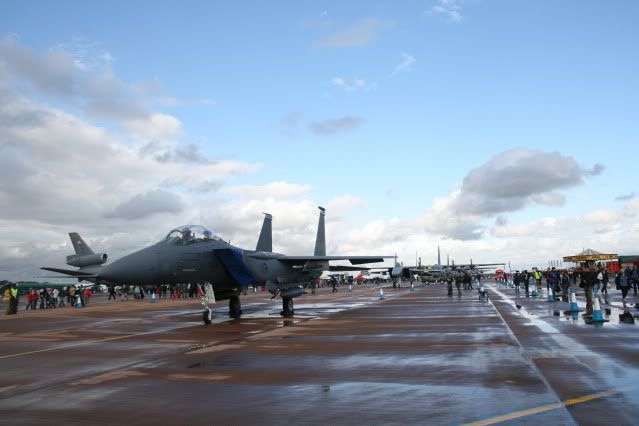
The static display stretched down the entire length of the runway.
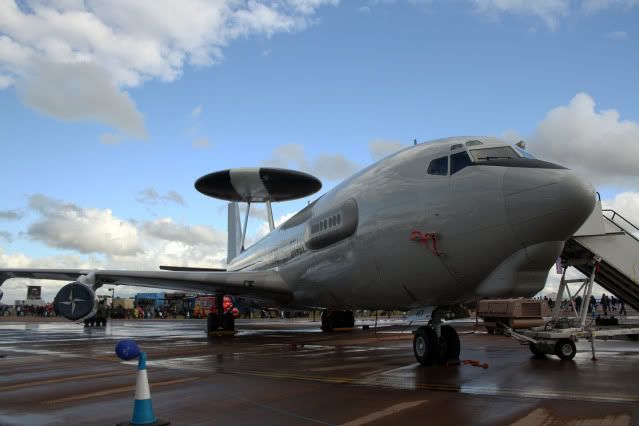
NATO E-3A Sentry.
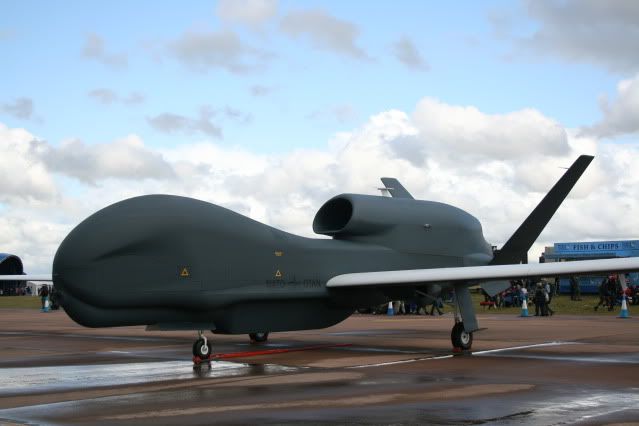
NATO RQ-4 Global Hawk (unmanned aerial vehicle).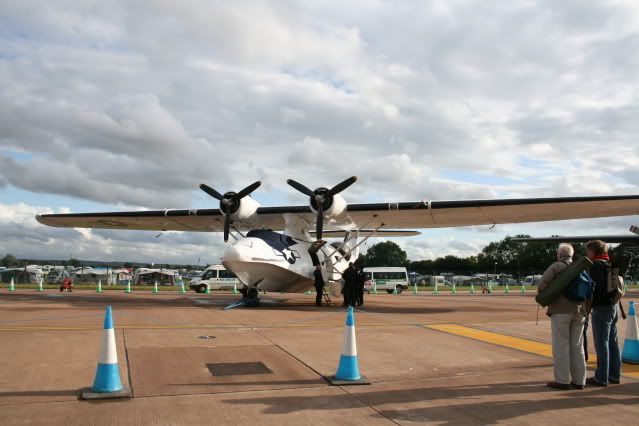
Civilian PBY-5A Catalina (flying boat).
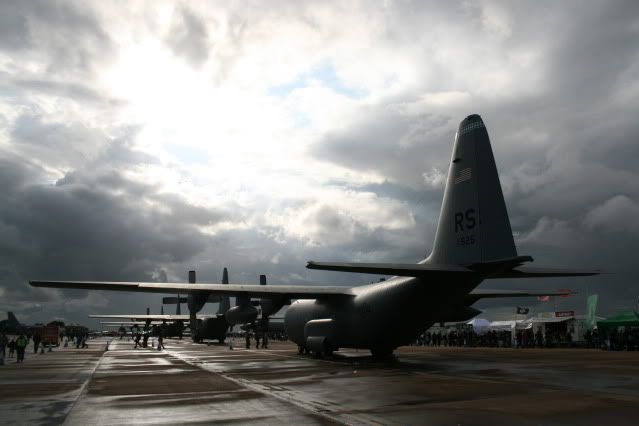
A row of USAF C-130 Hercules'.
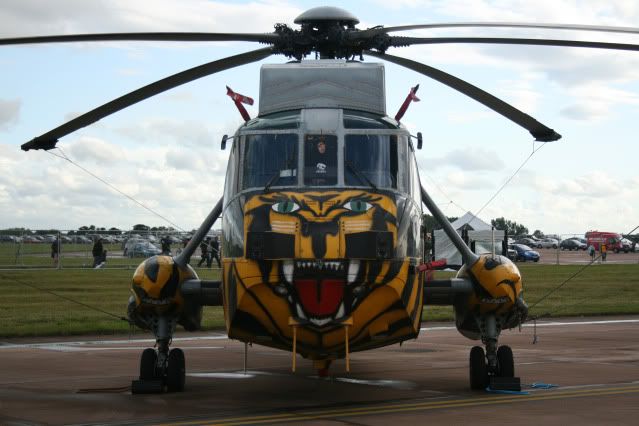
Royal Navy Sea King with tiger paint job.
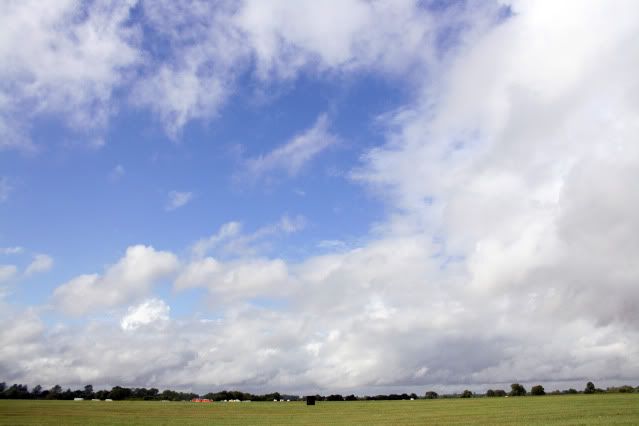
Our view of the airfield; the weather alternated between cloud, rain and sun several times over the day.
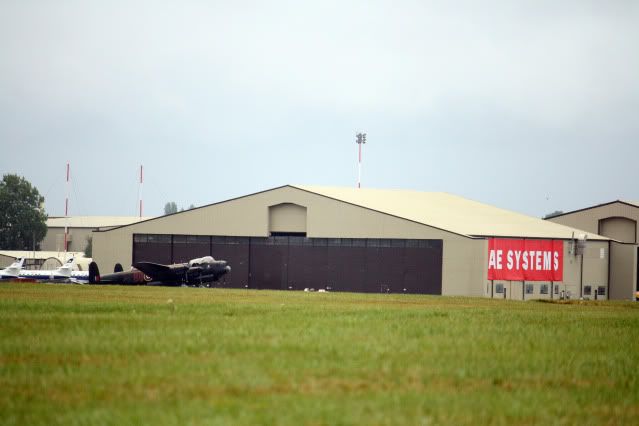
An Avro Lancaster I far off near a hanger. Unfortunately due to the flying conditions this and a few other classic planes were not airbourne.

Fire Master!
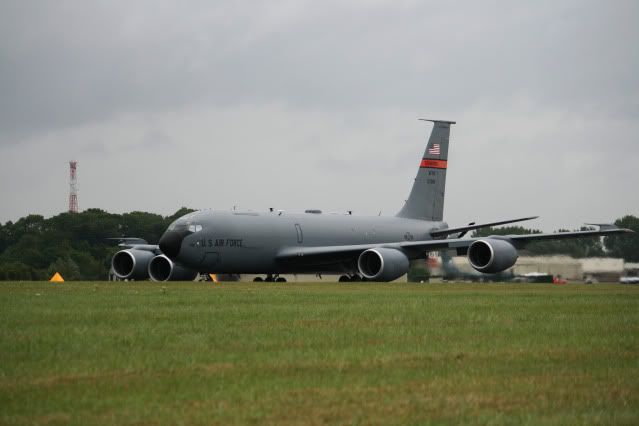
Prior to the main show, American personnel leave for the US via the Azores onboard a Boeing Stratotanker.
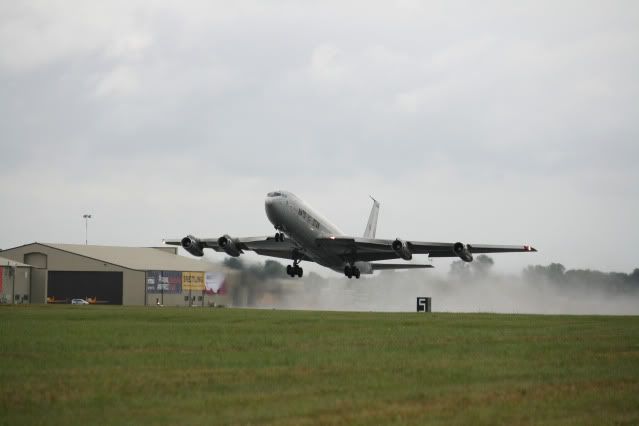
A NATO Boeing 707 takes off.
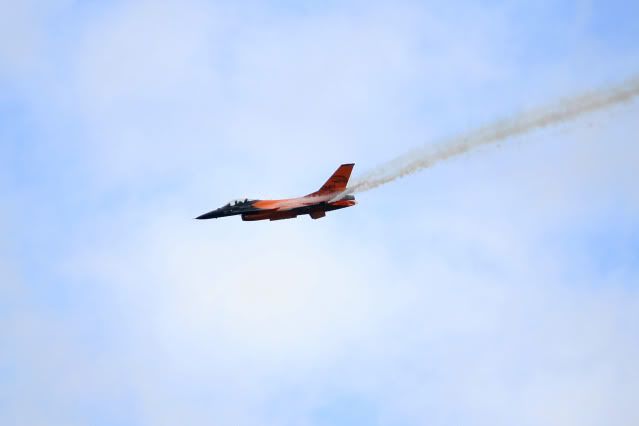
The show begins with a solo display by a F-16AM Fighting Falcon of the Royal Netherlands Air Force.
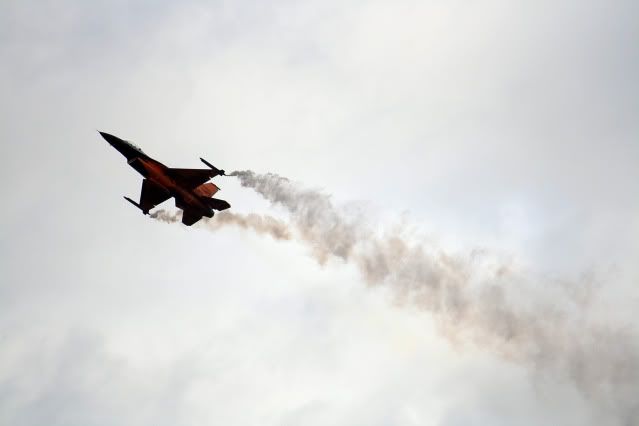
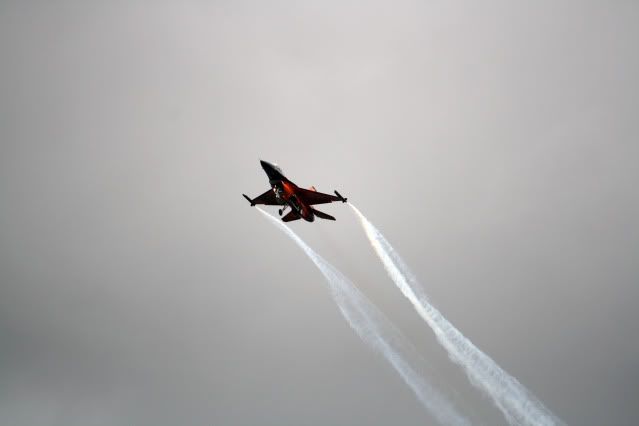
Taken just after the plane extended it's landing gear to perform a 'dirty roll'.
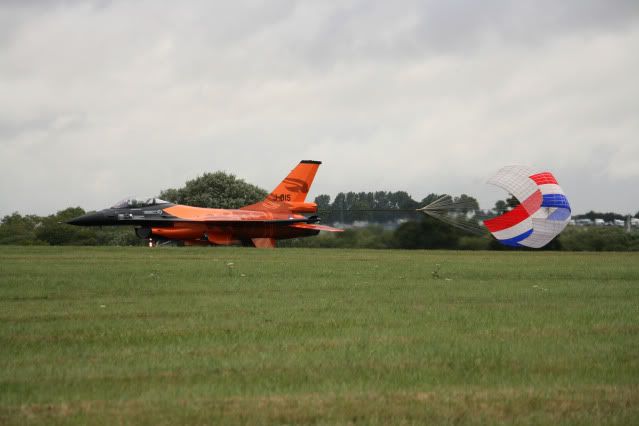
The pilot waves and deploys his dutch parachute!
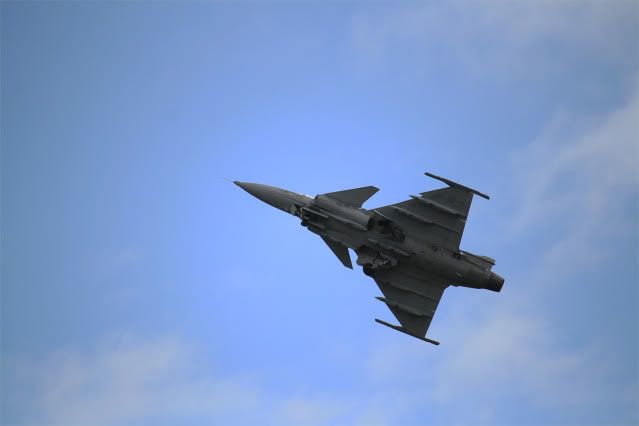
A Saab Gripen of the Swedish Air Force takes to the sky with much noise.
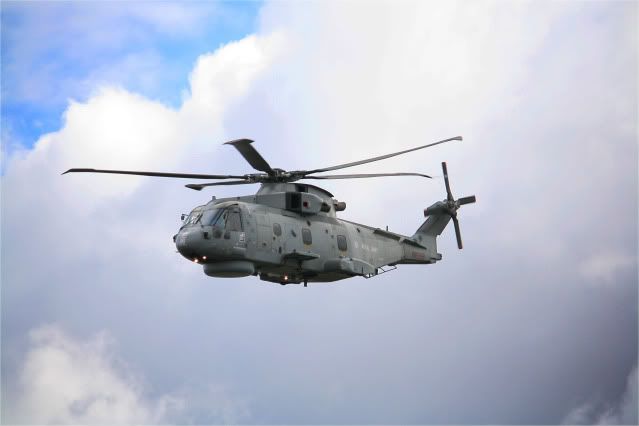
AgustaWestland Merlin HM1 of RNAS Culdrose.
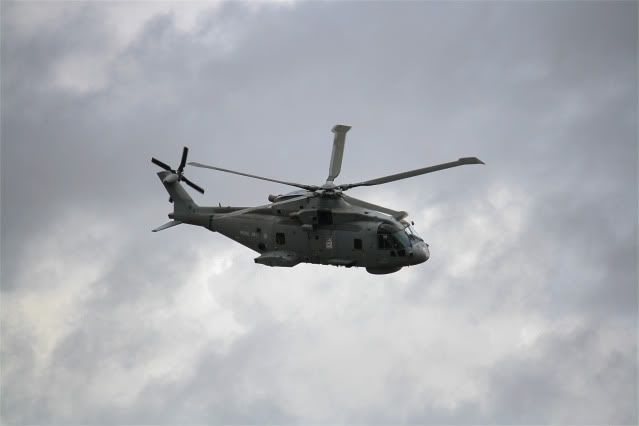
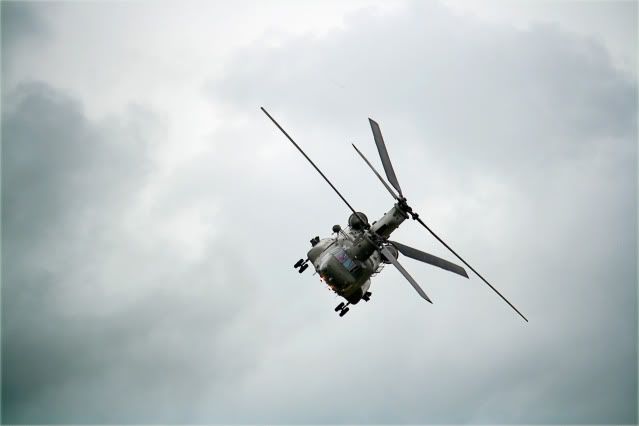
A Boeing Chinook HC2, one of 48 Chinooks in the RAF.

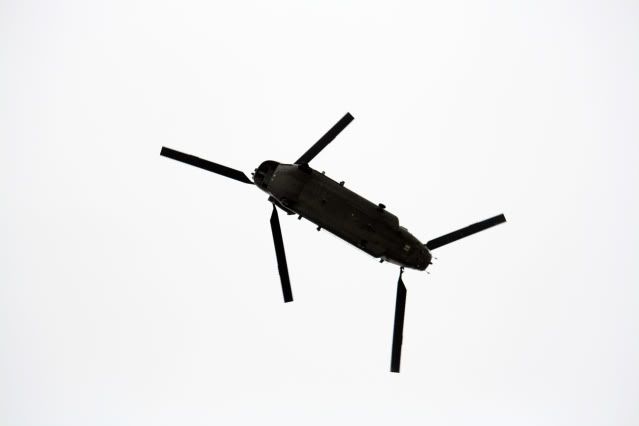
The manoeuvres they pulled were impressive.
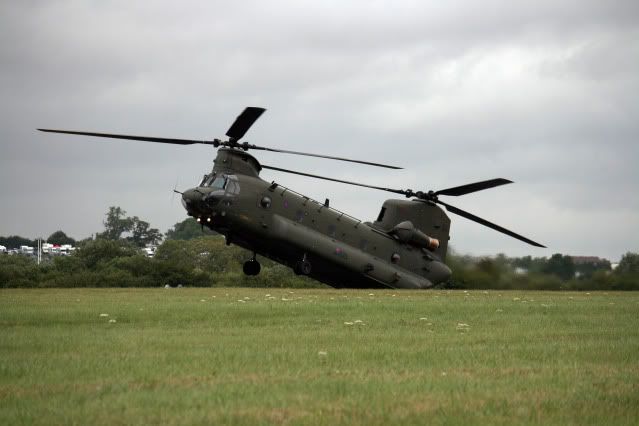
Reversing down the runway.
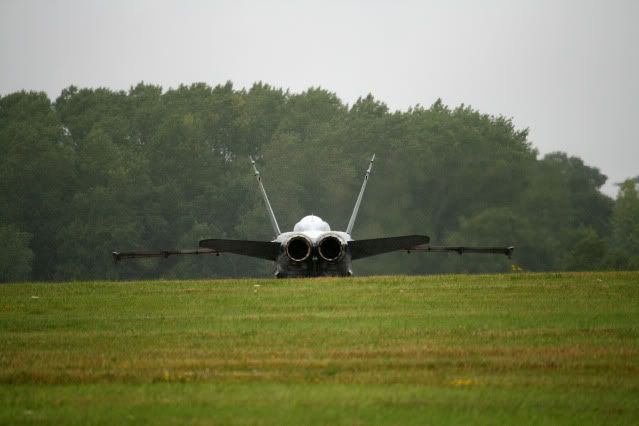
The back of an EF-18A Hornet of the Spanish Air Force.
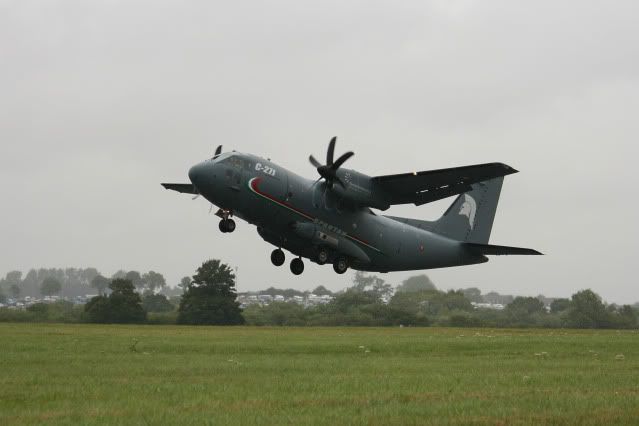
A C-27J Spartan of the Italian Air Force takes off in heavy rain.
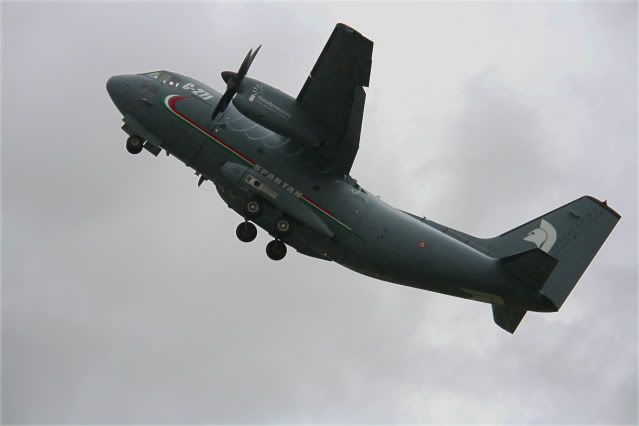
Note the water trails from the propellers.
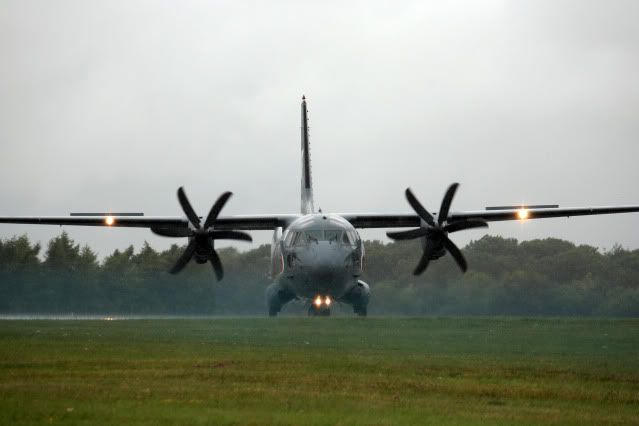
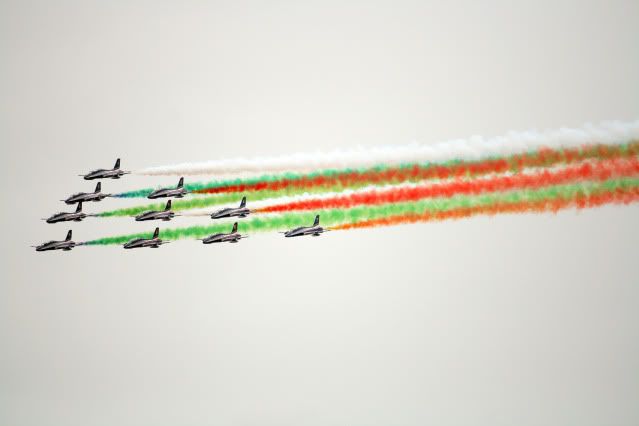
Il Frecce Tricolori, the Italian Air Force Aerobatic Team.
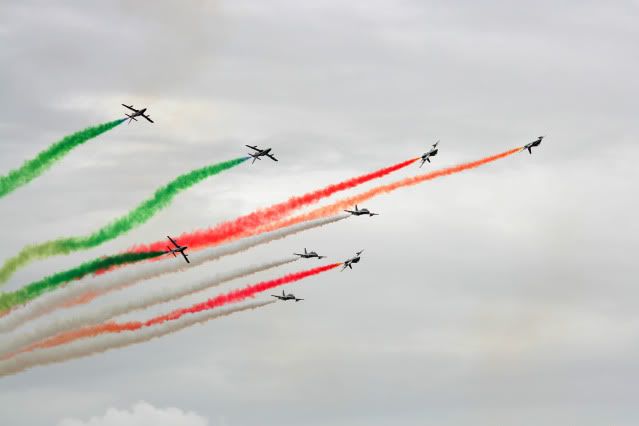
Flying 10 Aermacchi MB339As.
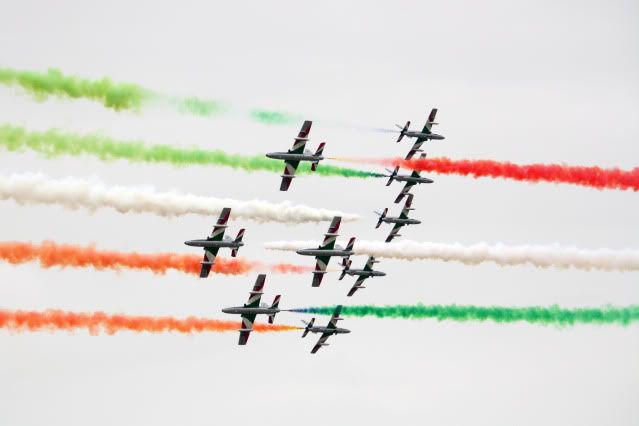
Passing manouevre.
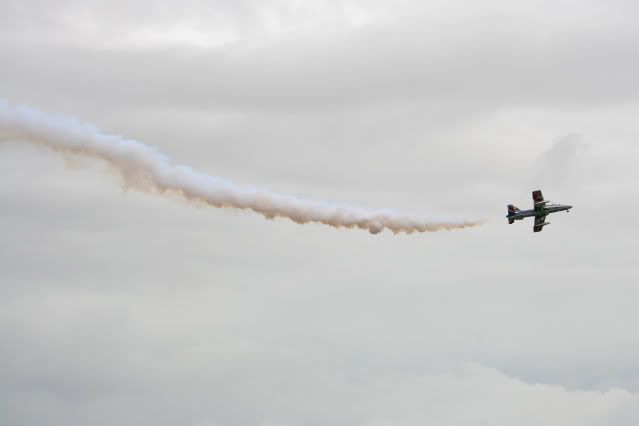
The 'drunken pilot' routine, whereby one plane bounces up and down at slow speed down the runway!
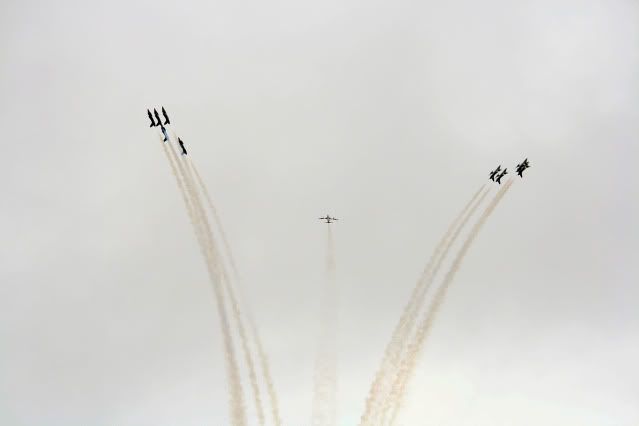
The start of the heart formation.
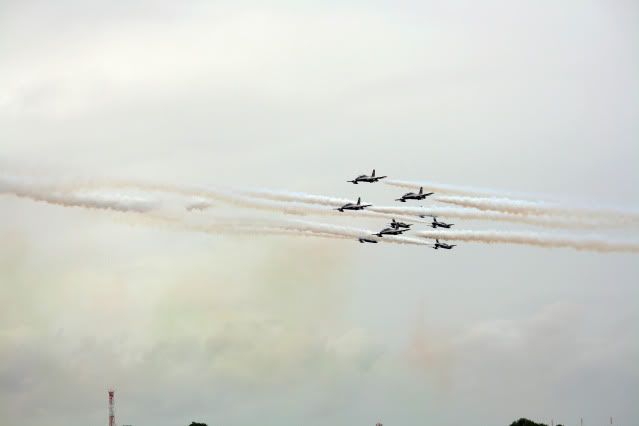
The rear aircraft no longer pierces the passing groups due to the Ramstein airshow disaster where it collided with one of the planes and the resulting fireball hit the crowd, killing 70 people.

Painting the Italian flag across the sky.
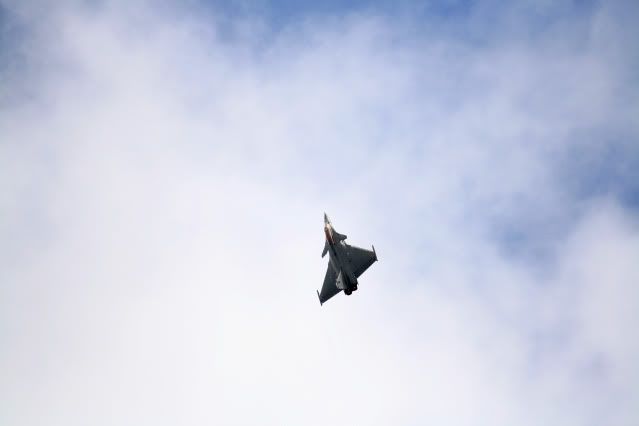
Dassault Rafale of the French Air Force on it's Air Tattoo display debut.
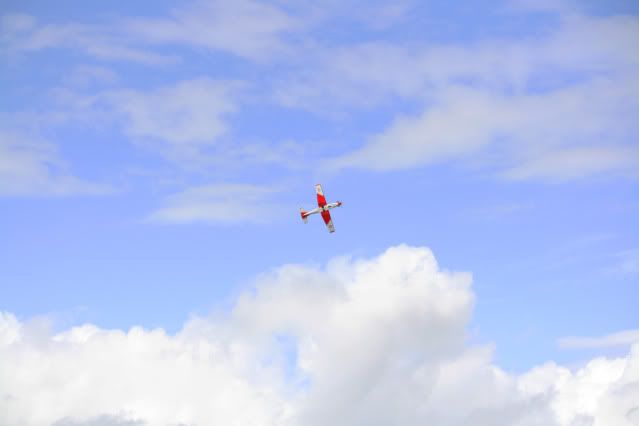
A lone Pilatus NCPC-7 Turbotrainer, one of 9 in the Swiss PC-7 team.
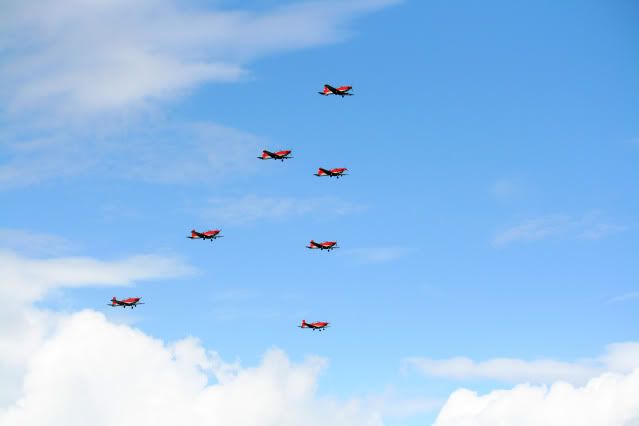
The team was officially formed in 1989 and flew as part of the Swiss Air Force's 75th anniversary celebrations.
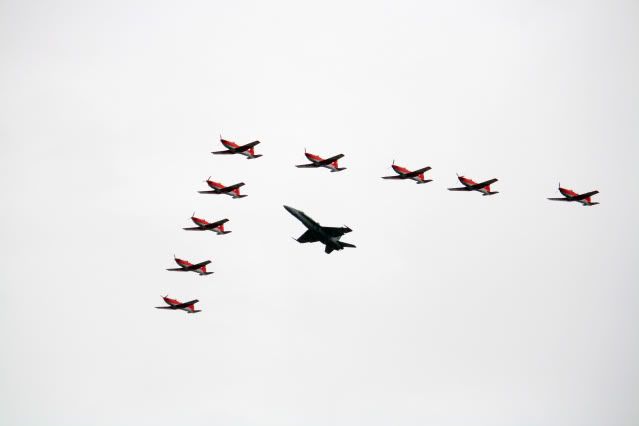
The PC-7's are accomanied by another plane of the Swiss Air Force, a F/A-18C Hornet.
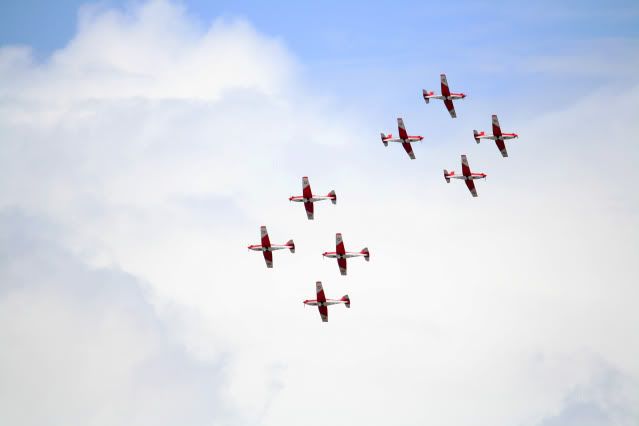
Two diamond formations pass each other.
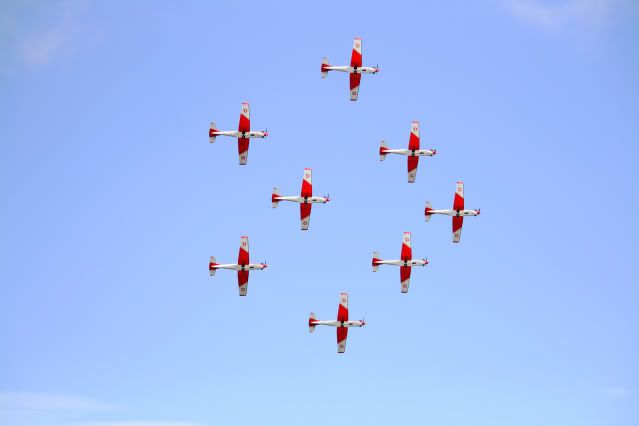
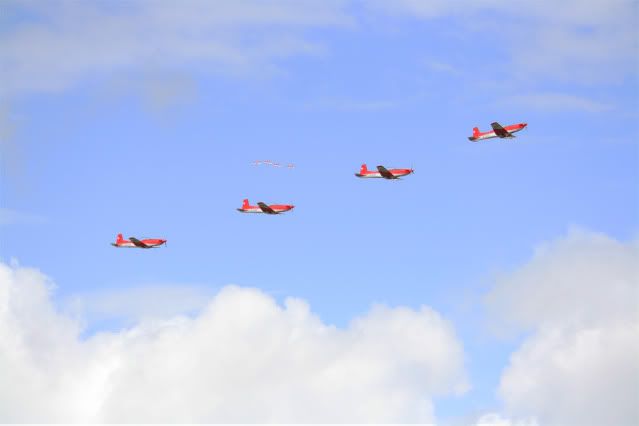
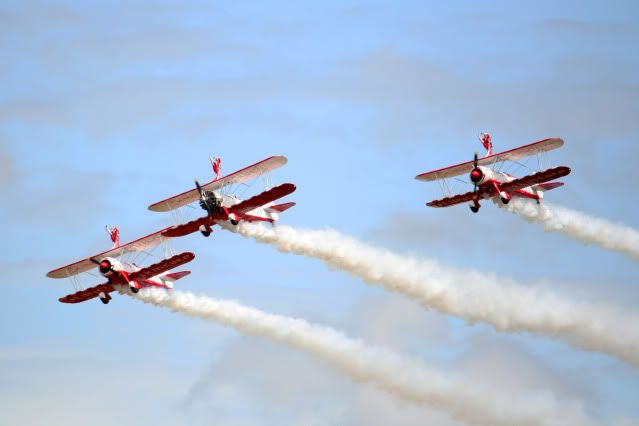
Team Guinot, the world's only formation wingwalking team.
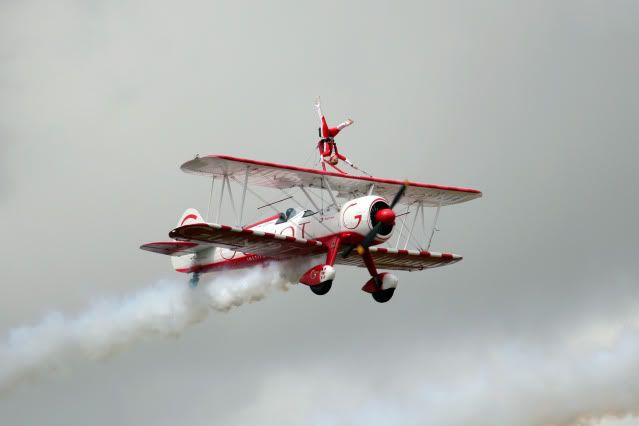
The wingwalkers have to withstand 150mph of wind pressure.
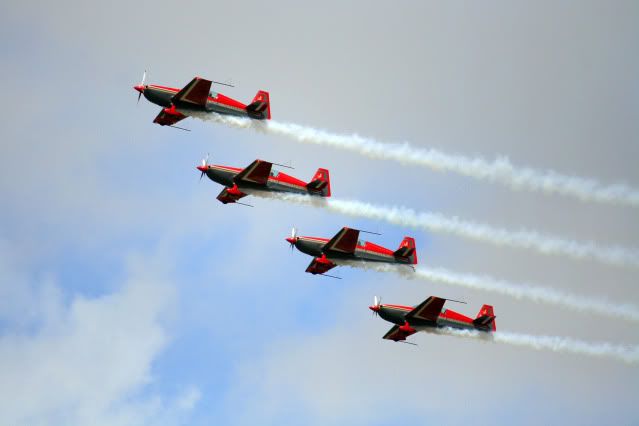
The Royal Jordanian Falcons, flying Extra EA300Ls.
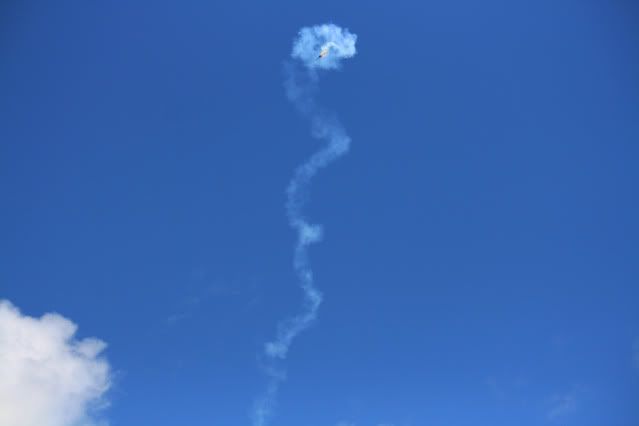
One pilot rises vertically, then quite literally falls out of the sky before regaining control in a deliberate manoeuvre.
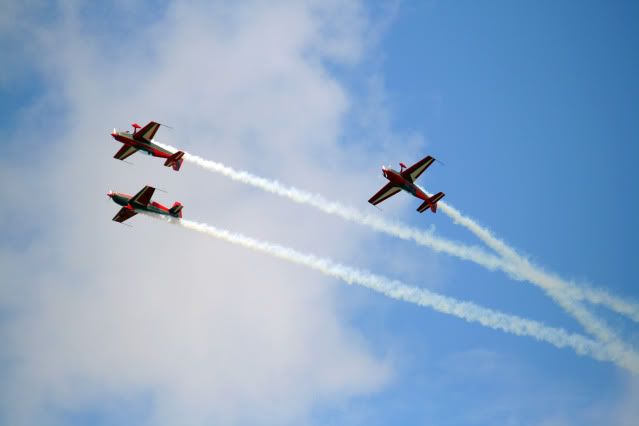
Two of the falcons fly inverted to one another, whilst the third cycles round them.
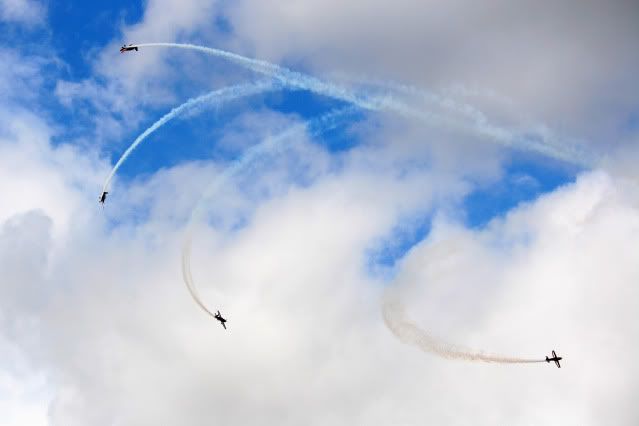
The team was established at the behest of King Hussein of Jordan in 1978.
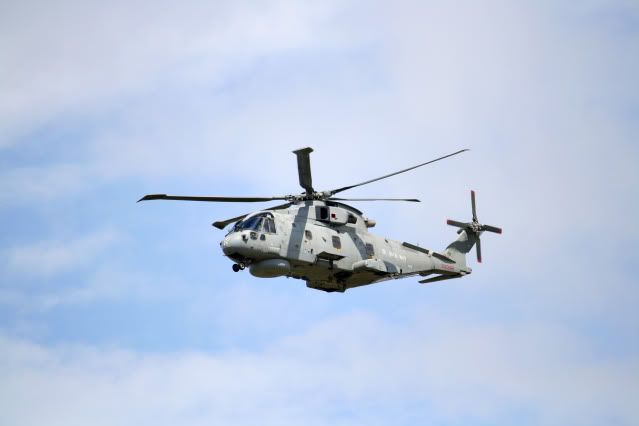
The Merlins return as part of 'Fly Navy 100', a century of Naval aviation.
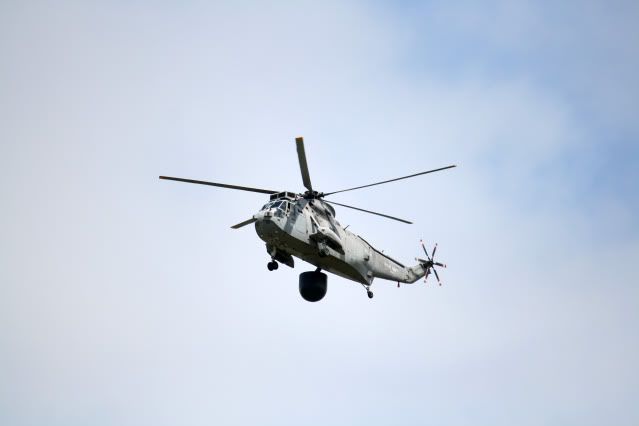
Westland Sea King ASaC7.
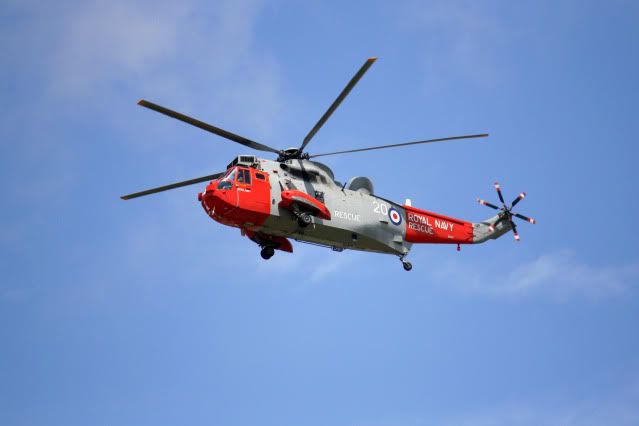
Westland Sea King HU5.
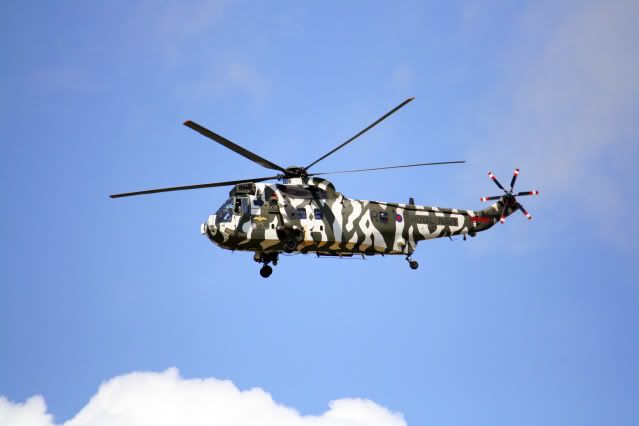
Westland Sea King HC4.
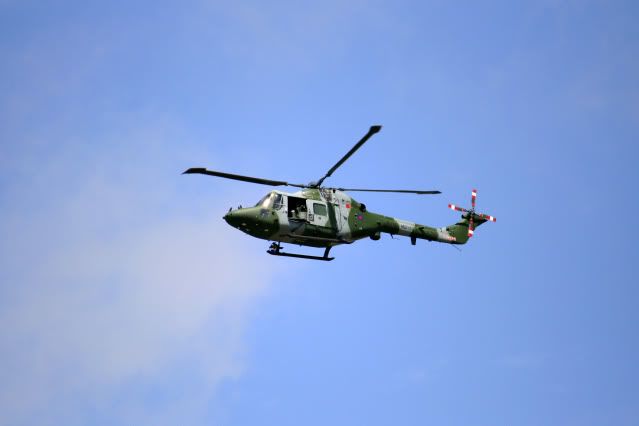
Westland Lynx AH7.
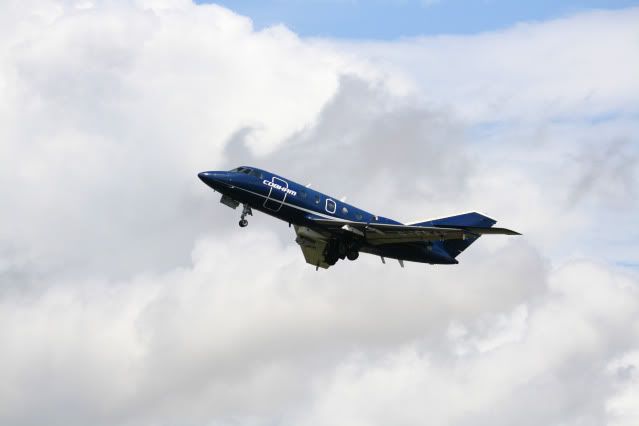
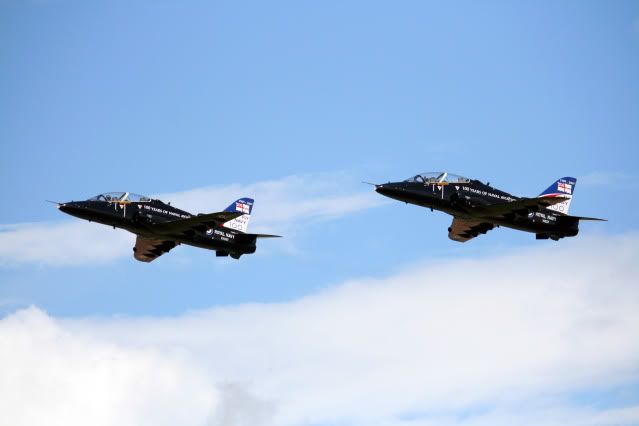
2 BAe Hawks, part of The Black Seahawks.
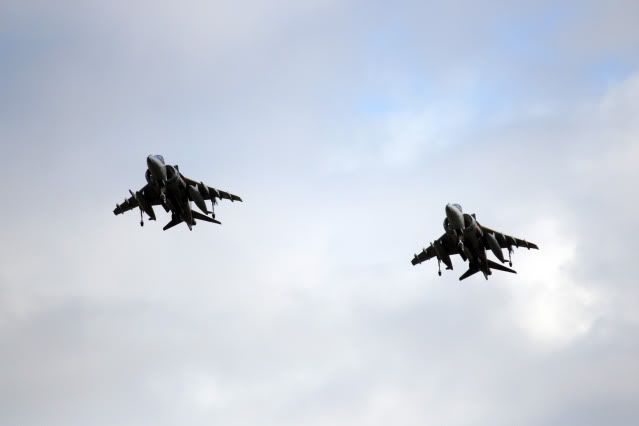
2 BAe Harriers of the Naval Strike Wing, RAF Cottesmore.
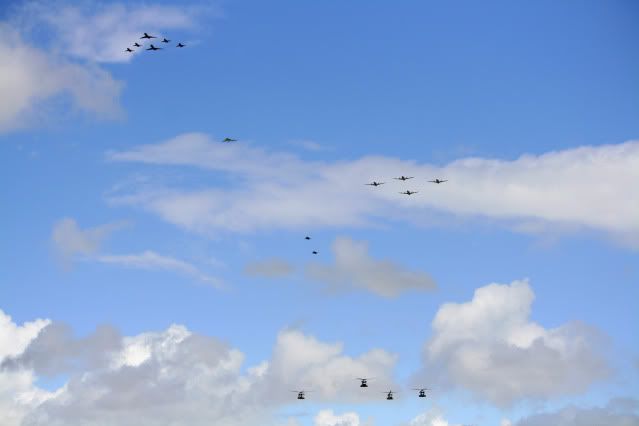
Part of the Fly Navy 100 group, top to bottom: The Black Seahawks with 4 BAe Hawks and 2 Dassault Falcons, 1 de Havilland Sea Vixen, 4 Jetstream T2s, 2 Bae Harriers, 4 AgustaWestland Merlins.
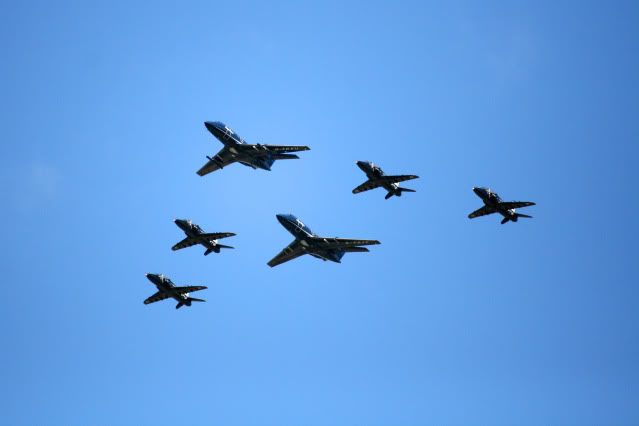
The Black Seahawks.
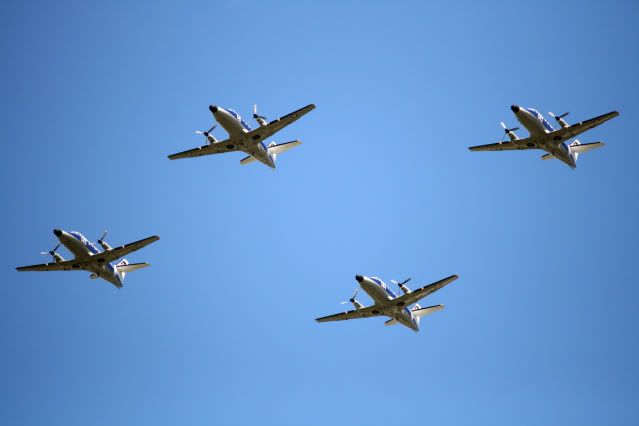
4 Jetstream T2s.
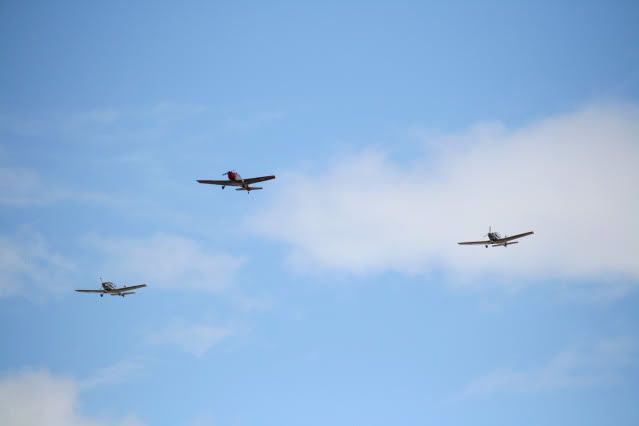
A DHC Chipmunk leads two other single-prop planes.
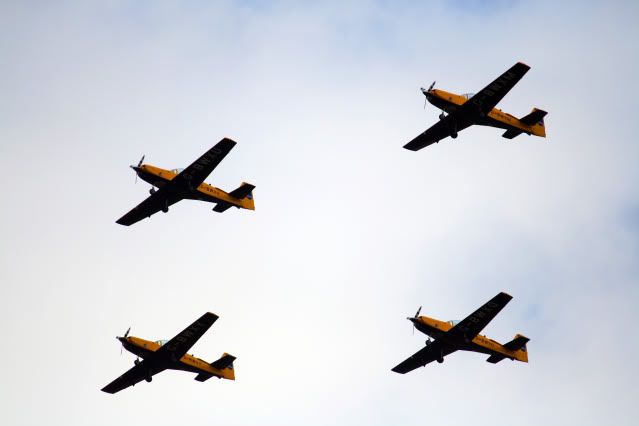
4 Slingsby Fireflies.
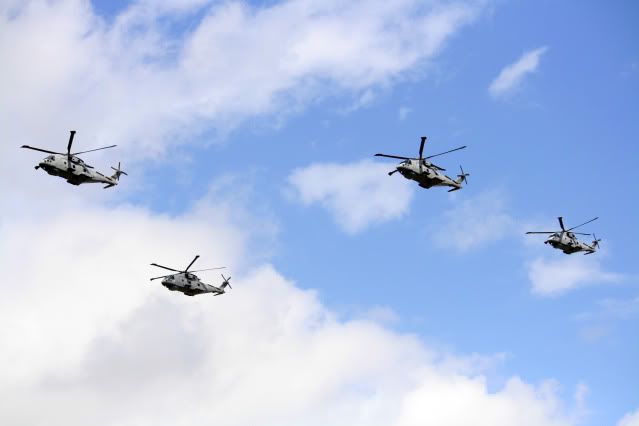
4 Merlin HM1s.
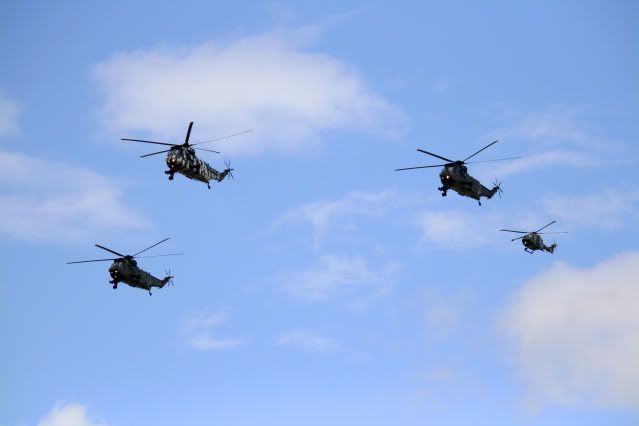
4 Seakings and a Lynx.

4 Eurocopter Squirrels.
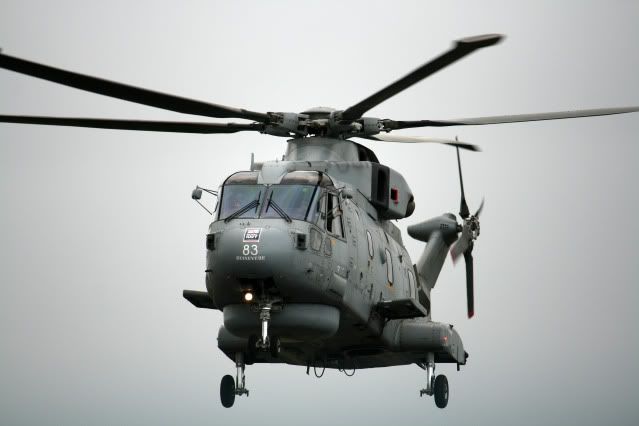
One of the pilots of a Merlin waves to the spectators.
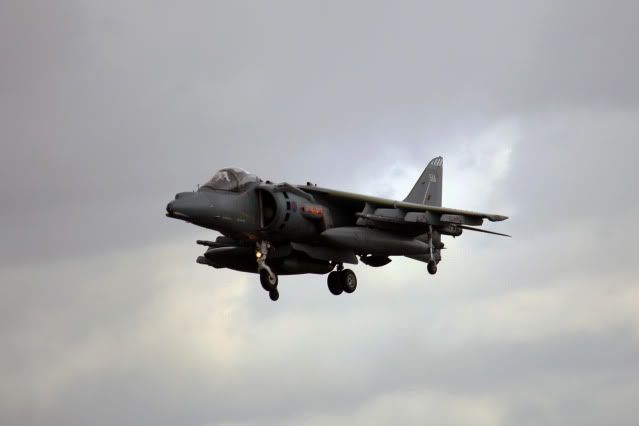
A BAe Harrier prepares to land.
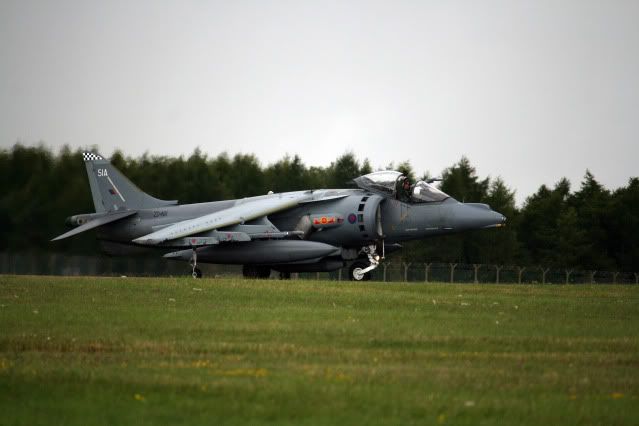
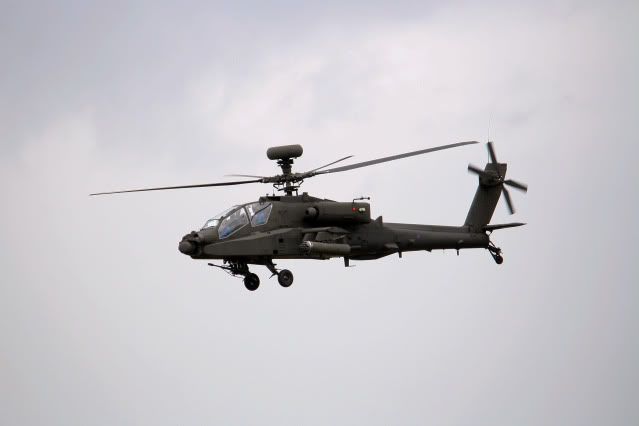
A Westland Apache AH1, part of the Army Air Corps Helicopter Display Team: The Blue Eagles.
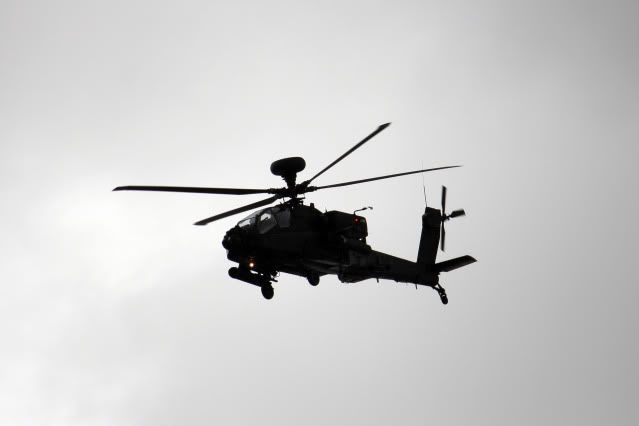
The Blue Eagles are the world's longest established helicopter display team, intially formed in 1968.
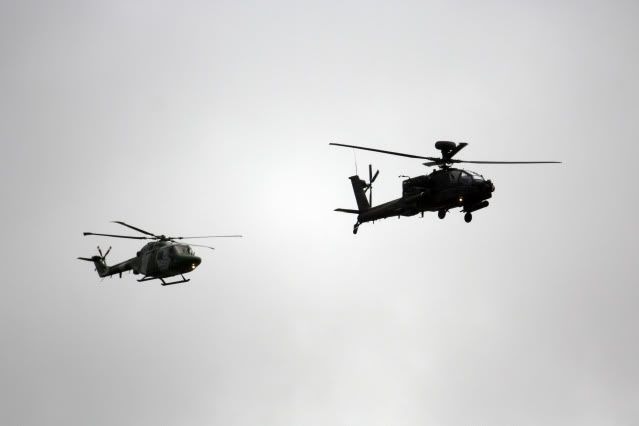
From 1995 to 2008 the team consisted of 4 Gazelles and a Lynx, however it has been reduced to just these two helicopters now.
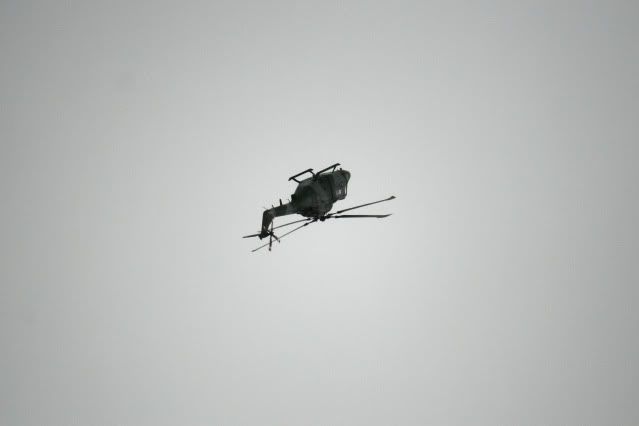
The Lynx is the fastest helicopter in the world with a top speed of 200mph. It is capable of performing loops and rolls.
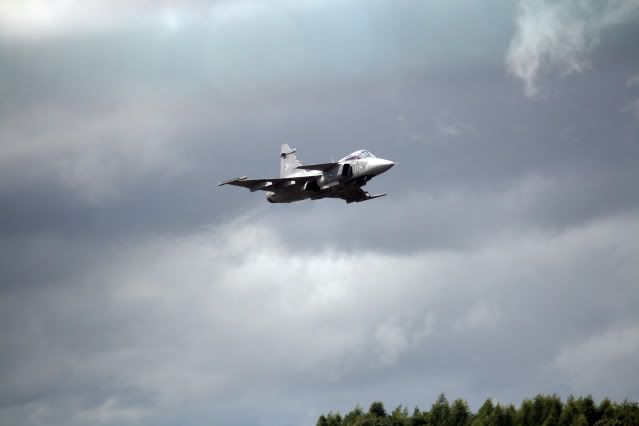
A Saab Gripen of the Hungarian Defence Forces roars past at high speed and low altitude.
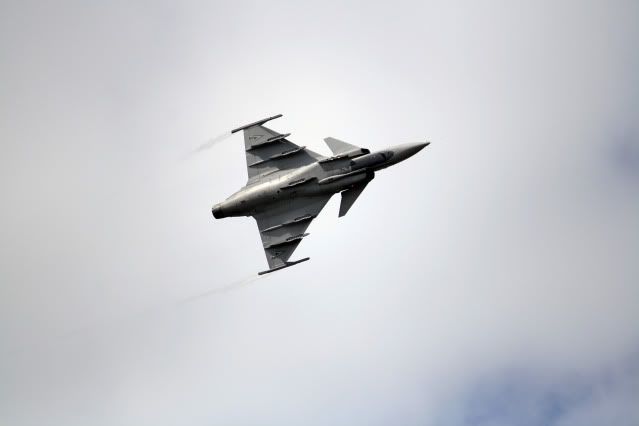
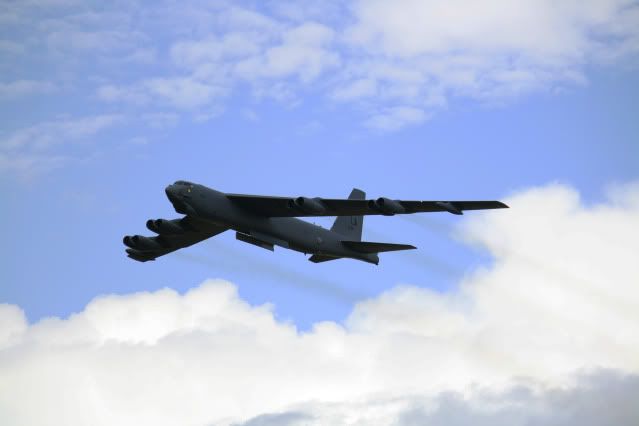
The mighty B-52 Stratofortress of USAF's 20th Bomb Squadron passes.
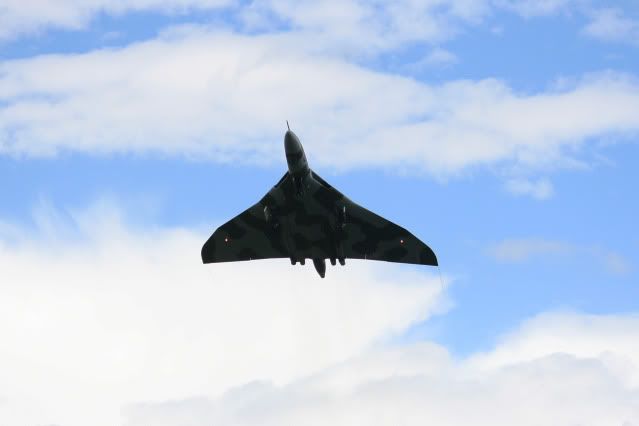
One of the stars of the show: Avro Vulcan XH558 takes to the sky.
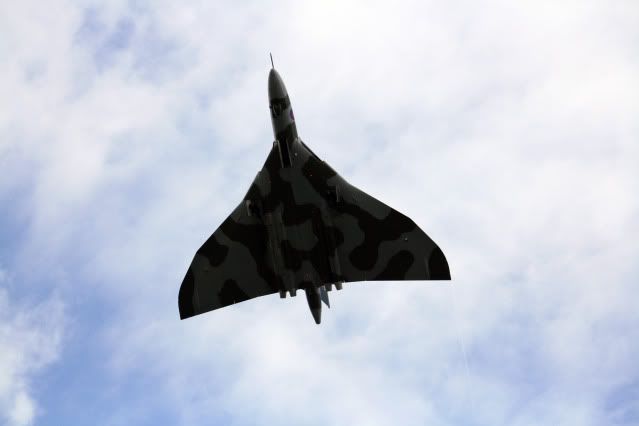
XH558 was built in 1960 and is the only remaining airworthy example of the Avro Vulcan. It is funded entirely by charitable donations and the UK Lottery's Heritage Fund.
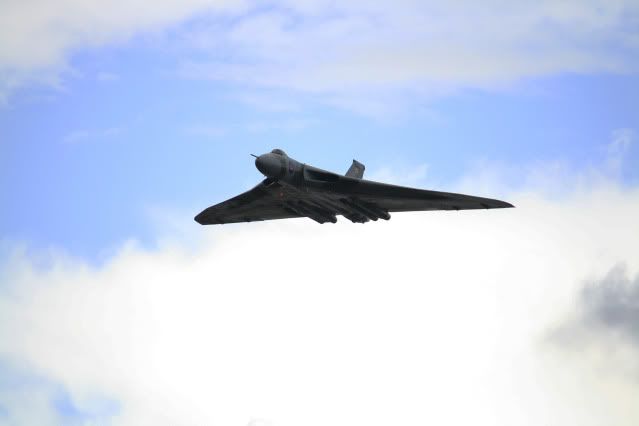
The Vulcan carried nuclear armament during the Cold War as deterrence against the Soviet Union.
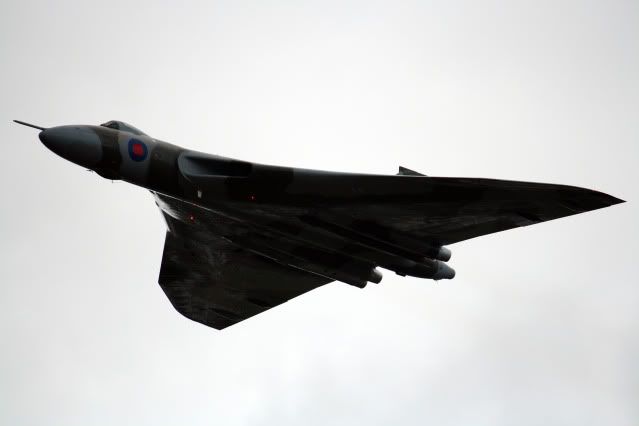
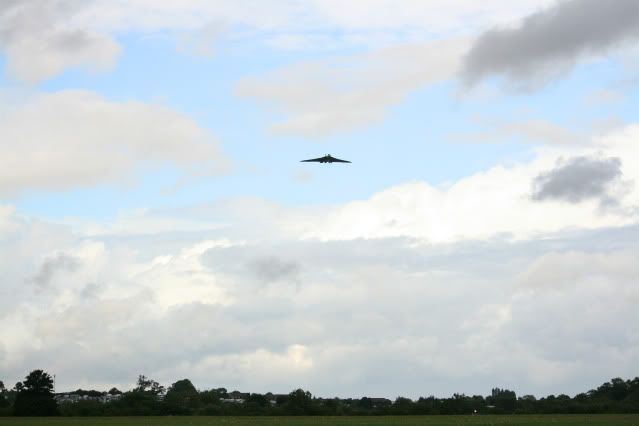
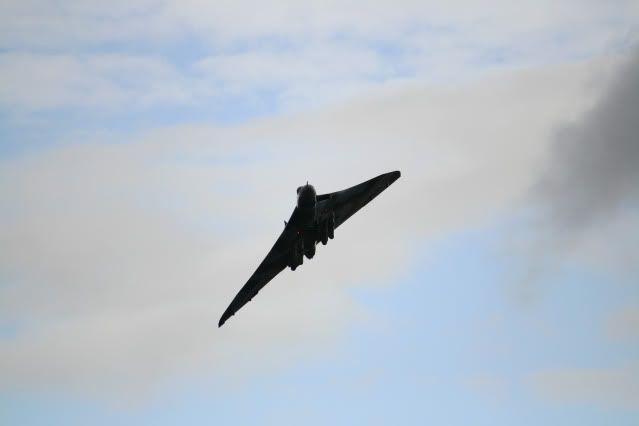
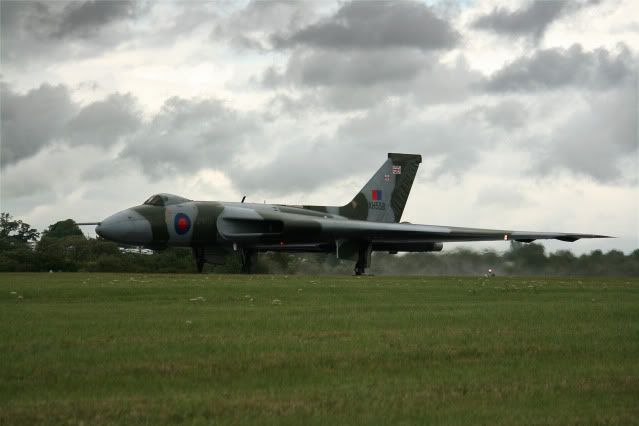
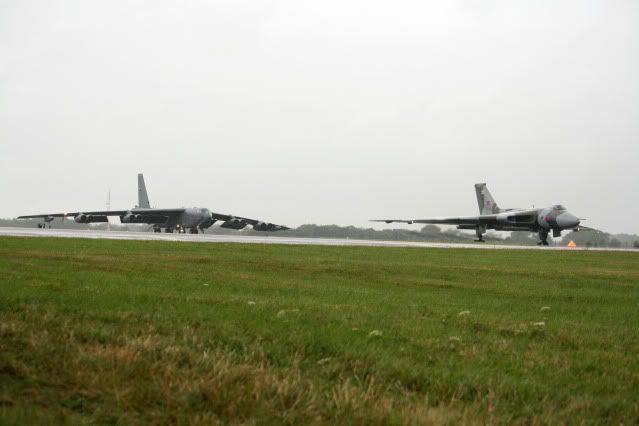
The Vulcan taxis down the runway with it's American counterpart, the B-52.
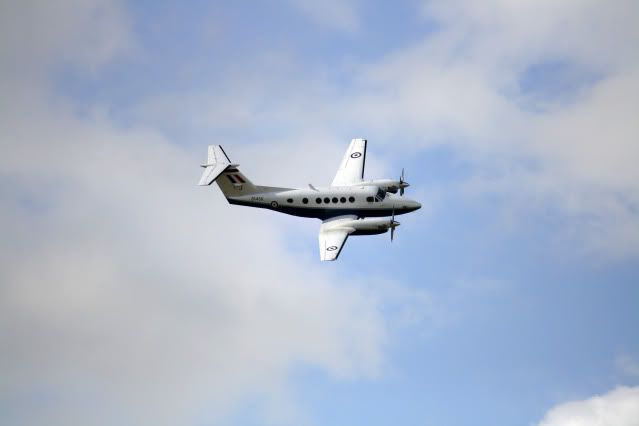
A Hawker Beechcraft King Air 200 enjoys a break in the weather.
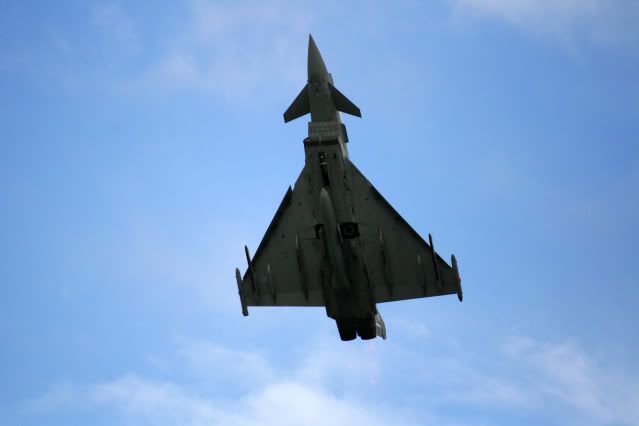
Along with a Eurofighter typhoon F2.
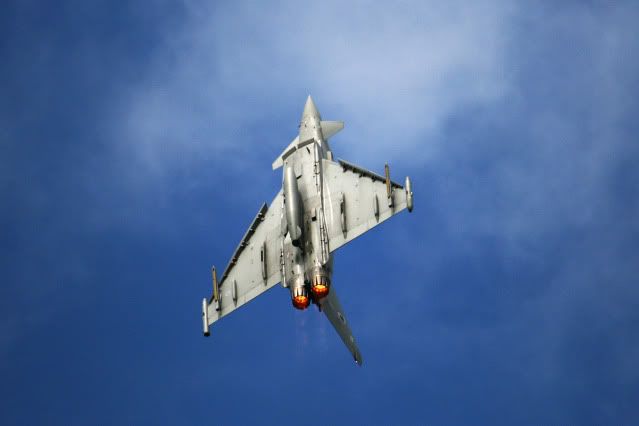
It's rapid afterburner-assisted ascension shatters the silence.
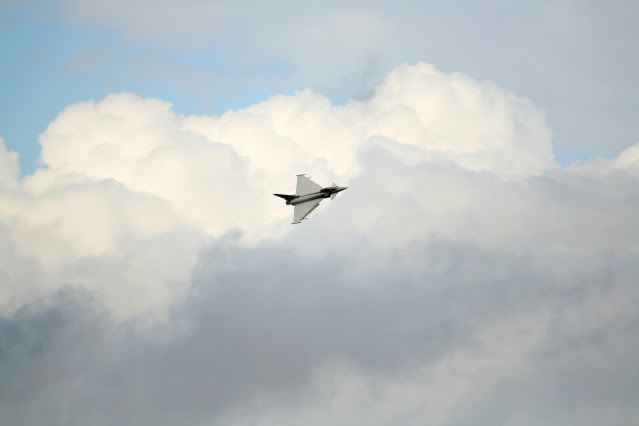
The Eurofighter typhoon is one of the world's most advanced swing-role aircraft.
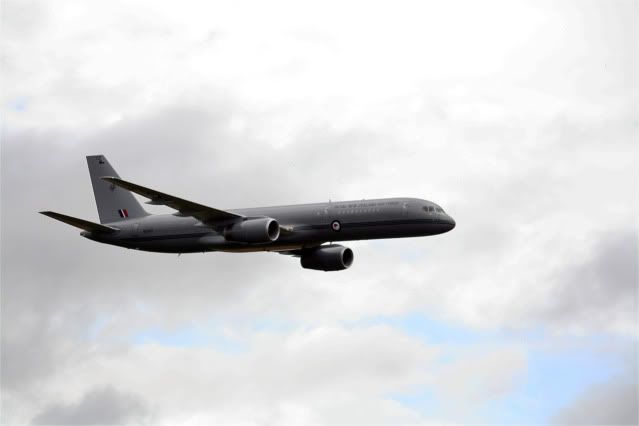
A Boeing 757-2K2 of the Royal New Zealand Air Force.
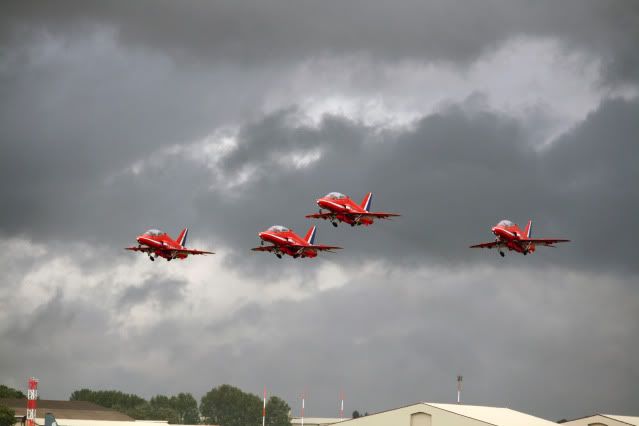
The Red Arrows take to the sky, flying 9 BAe Hawks.
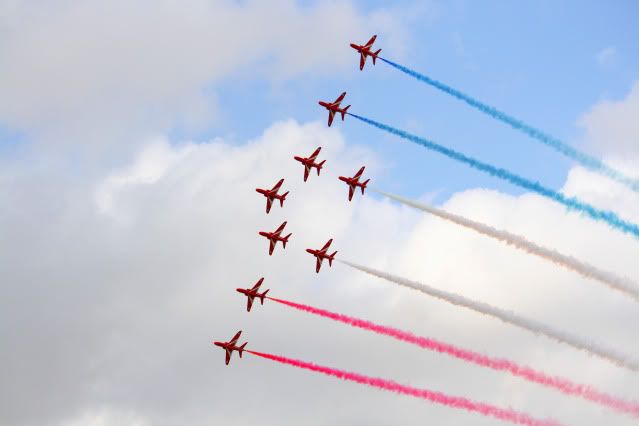
The Red Arrows were formed in late 1964 as an all-RAF team. The display pilots are some of the best in the RAF, having a minimum of 1,500 flying hours and one fast jet frontline tour of duty each.
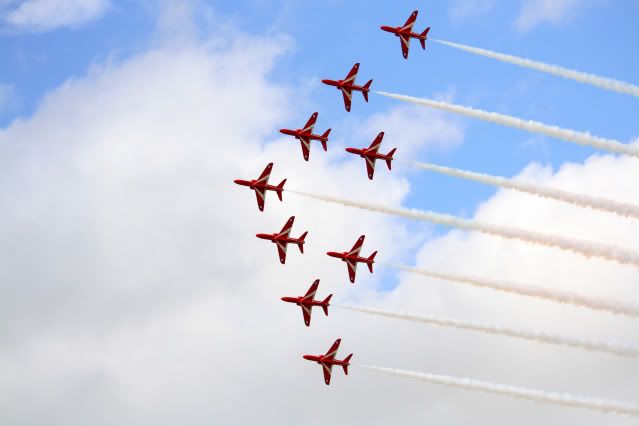
The Red Arrows in Big Vixen formation.
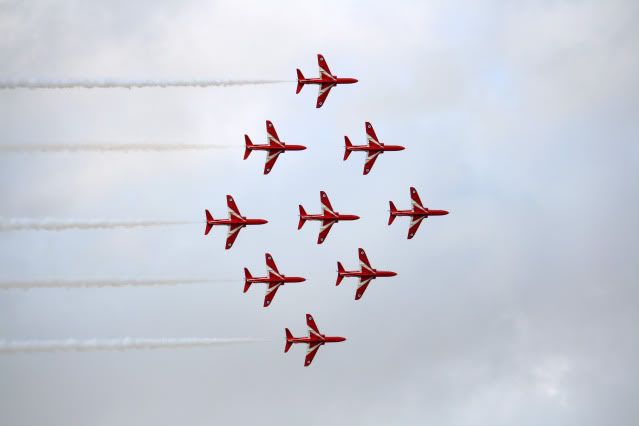
The Red Arrows in Diamond Nine formation.
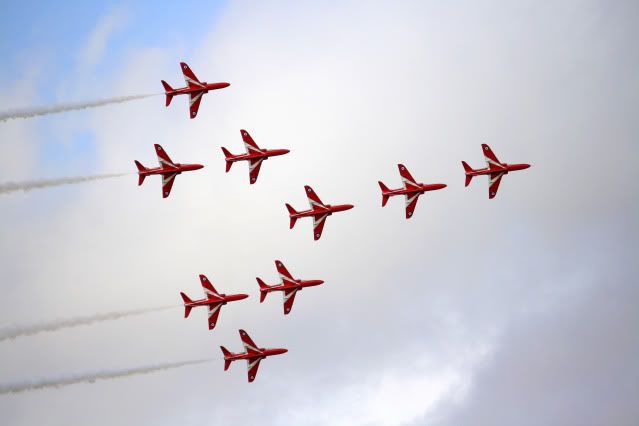
The Red Arrows in Concorde formation.
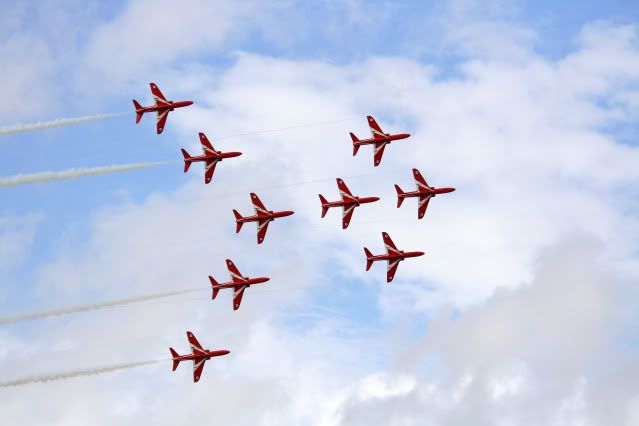
The Red Arrows in Typhoon formation, named after the RAF aircraft.
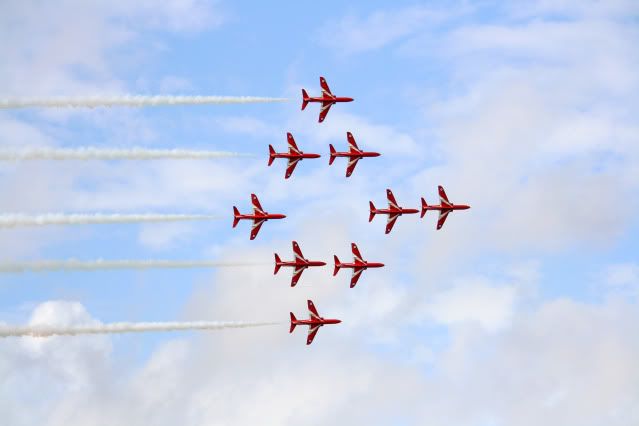
The Red Arrows in Gripen formation, named after the Swedish attack aircraft.
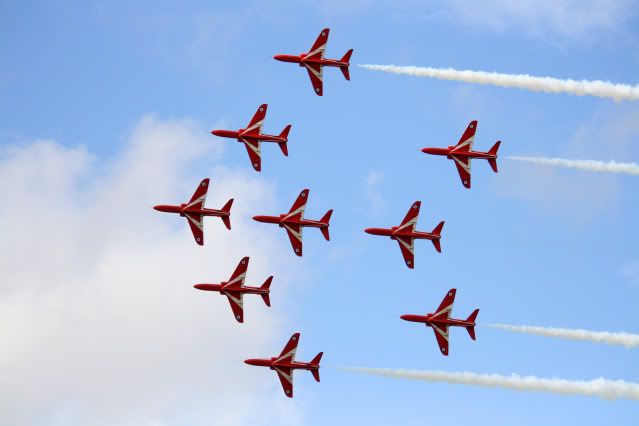
The Red Arrows in Feathered Arrow formation.
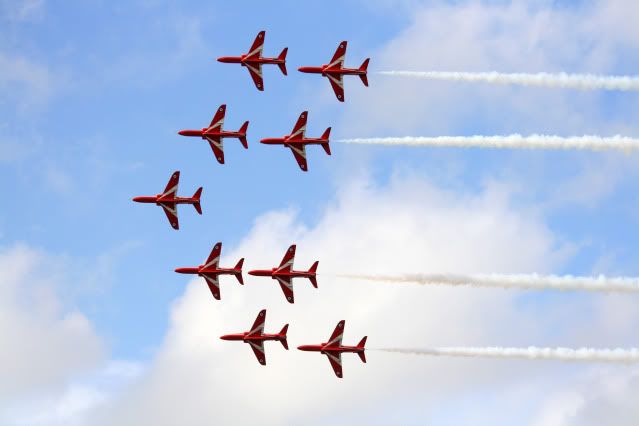
The Red Arrows in Chevron formation.
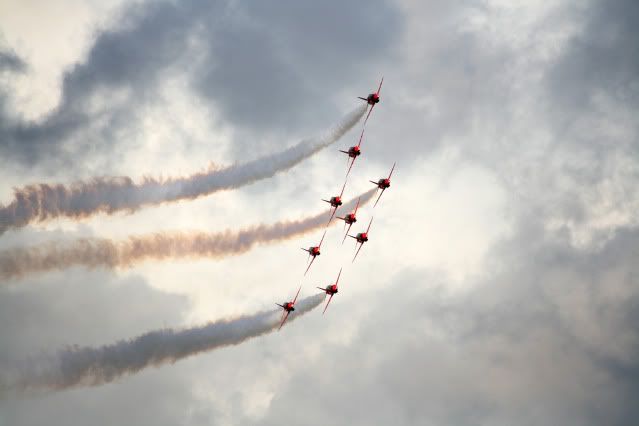
Each pilot is on the team for three years before they return for operational or instructional duties.
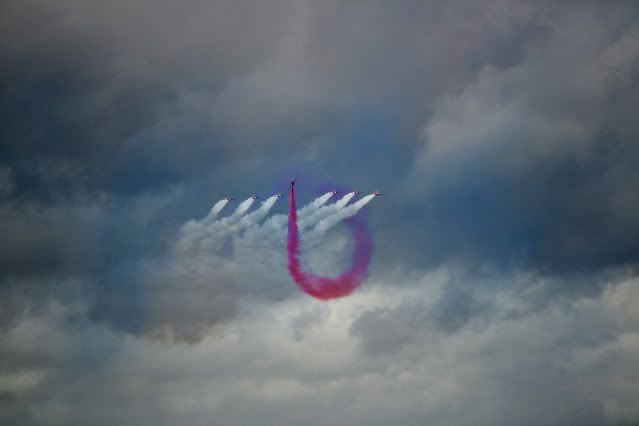
A single plane traces an infinity symbol around the others in a new manoeuvre.
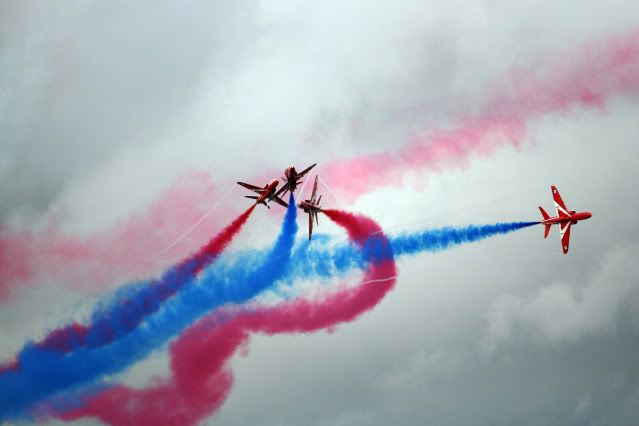
The Red arrows fly in two groups, Gypo (4) and Enid (5).
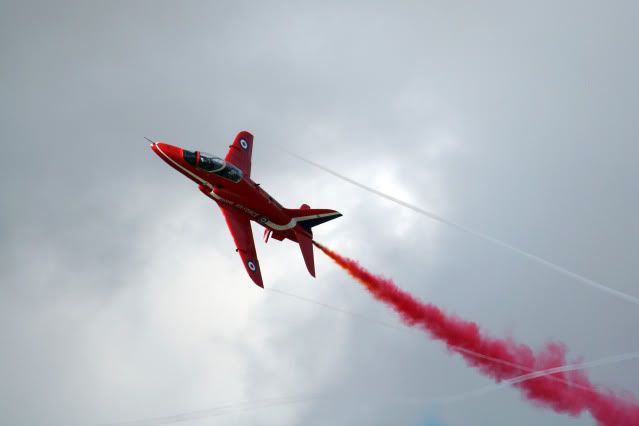
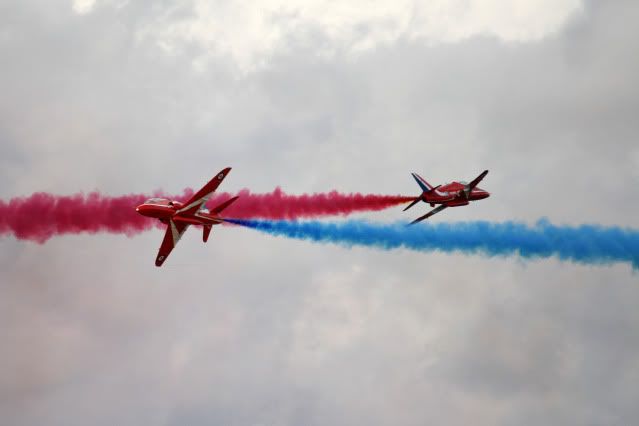
A close pass manoeuvre.
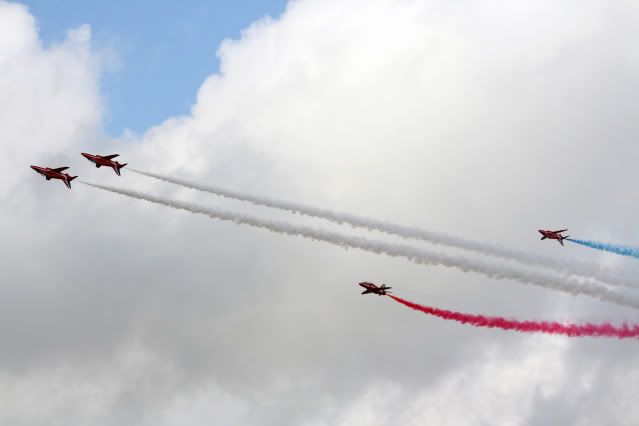
The Corkscrew manoeuvre.
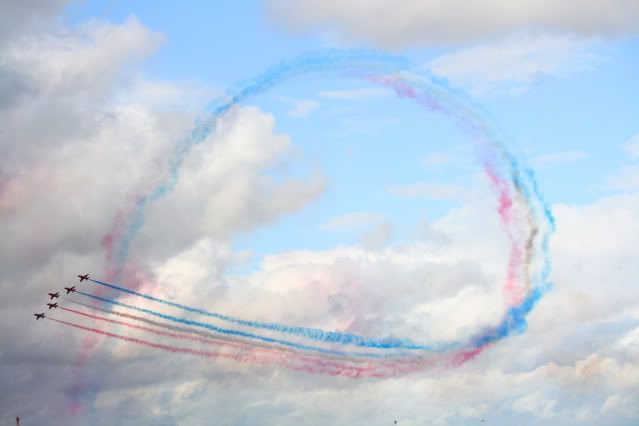
The Python manoeuvre.
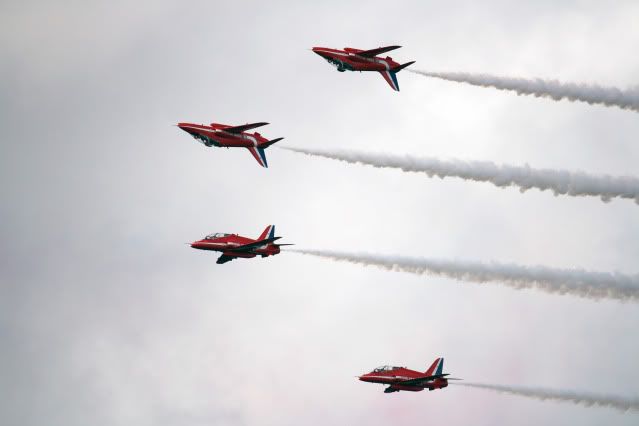
The Mirage manoeuvre.
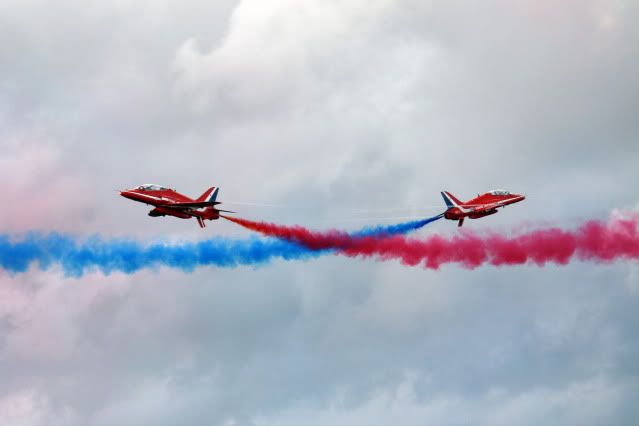
Another close pass.
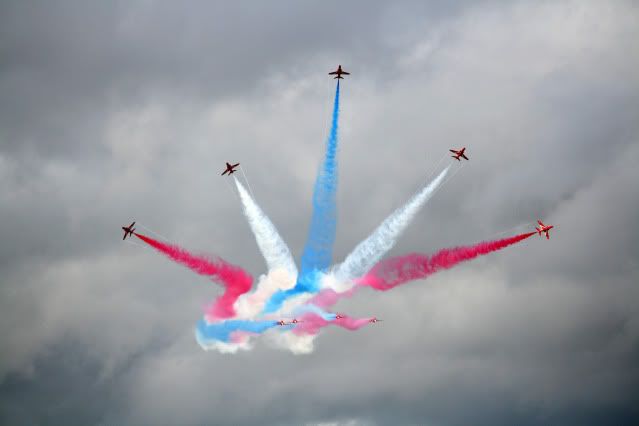
The Red Arrows break against a dramatic sky.
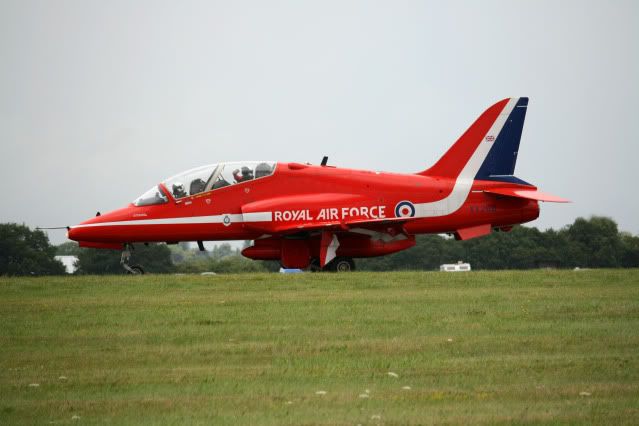
The Aerobatic Team lands and the show is over, until next year!
RIAT has become somewhat of a highlight for my year and the changeable weather did little to dampen my enjoyment. It was a pleasure and a fun challenge taking photos of all the aircraft and each time I've attended I've returned with a greater love for military aviation, one that may well manifest itself into my career one day, who knows! I hope you have enjoyed the photos, this post has been very Mikepaws-esque!
The gates opened at 7:30 and we arrived shortly before this which made a change from two years ago when we arrived just as the show was starting and hurriedly took our places as a 747 sauntered by! Annoyingly us early arrivals had a fair bit of a walk from the parking to the airfield and the weather was becoming increasingly wet, however we took our places at the front of the field just left of the grandstand which give very decent views of the action.
Before the show started at 9:30 I took a look at the static display which is quite extensive; I walked down it again after the show was over and still didn't manage to get to the end before leaving! Photography will thus be grouped static then flying, with annotations and further information of interest:

USAF B1-B Lancer.

Closeup of the Lancer's nose art.

USAF Fighting Falcon.

UASF B-52H Stratofortress.

UASF B-52H Stratofortress.

UASF B-52H Stratofortress.

USAF C-17A Globemaster III.

USAF A-10 Thunderbolt II.

USAF F-15E Strike Eagle.

The static display stretched down the entire length of the runway.

NATO E-3A Sentry.

NATO RQ-4 Global Hawk (unmanned aerial vehicle).

Civilian PBY-5A Catalina (flying boat).

A row of USAF C-130 Hercules'.

Royal Navy Sea King with tiger paint job.

Our view of the airfield; the weather alternated between cloud, rain and sun several times over the day.

An Avro Lancaster I far off near a hanger. Unfortunately due to the flying conditions this and a few other classic planes were not airbourne.

Fire Master!

Prior to the main show, American personnel leave for the US via the Azores onboard a Boeing Stratotanker.

A NATO Boeing 707 takes off.

The show begins with a solo display by a F-16AM Fighting Falcon of the Royal Netherlands Air Force.


Taken just after the plane extended it's landing gear to perform a 'dirty roll'.

The pilot waves and deploys his dutch parachute!

A Saab Gripen of the Swedish Air Force takes to the sky with much noise.

AgustaWestland Merlin HM1 of RNAS Culdrose.


A Boeing Chinook HC2, one of 48 Chinooks in the RAF.


The manoeuvres they pulled were impressive.

Reversing down the runway.

The back of an EF-18A Hornet of the Spanish Air Force.

A C-27J Spartan of the Italian Air Force takes off in heavy rain.

Note the water trails from the propellers.


Il Frecce Tricolori, the Italian Air Force Aerobatic Team.

Flying 10 Aermacchi MB339As.

Passing manouevre.

The 'drunken pilot' routine, whereby one plane bounces up and down at slow speed down the runway!

The start of the heart formation.

The rear aircraft no longer pierces the passing groups due to the Ramstein airshow disaster where it collided with one of the planes and the resulting fireball hit the crowd, killing 70 people.

Painting the Italian flag across the sky.

Dassault Rafale of the French Air Force on it's Air Tattoo display debut.

A lone Pilatus NCPC-7 Turbotrainer, one of 9 in the Swiss PC-7 team.

The team was officially formed in 1989 and flew as part of the Swiss Air Force's 75th anniversary celebrations.

The PC-7's are accomanied by another plane of the Swiss Air Force, a F/A-18C Hornet.

Two diamond formations pass each other.



Team Guinot, the world's only formation wingwalking team.

The wingwalkers have to withstand 150mph of wind pressure.

The Royal Jordanian Falcons, flying Extra EA300Ls.

One pilot rises vertically, then quite literally falls out of the sky before regaining control in a deliberate manoeuvre.

Two of the falcons fly inverted to one another, whilst the third cycles round them.

The team was established at the behest of King Hussein of Jordan in 1978.

The Merlins return as part of 'Fly Navy 100', a century of Naval aviation.

Westland Sea King ASaC7.

Westland Sea King HU5.

Westland Sea King HC4.

Westland Lynx AH7.


2 BAe Hawks, part of The Black Seahawks.

2 BAe Harriers of the Naval Strike Wing, RAF Cottesmore.

Part of the Fly Navy 100 group, top to bottom: The Black Seahawks with 4 BAe Hawks and 2 Dassault Falcons, 1 de Havilland Sea Vixen, 4 Jetstream T2s, 2 Bae Harriers, 4 AgustaWestland Merlins.

The Black Seahawks.

4 Jetstream T2s.

A DHC Chipmunk leads two other single-prop planes.

4 Slingsby Fireflies.

4 Merlin HM1s.

4 Seakings and a Lynx.

4 Eurocopter Squirrels.

One of the pilots of a Merlin waves to the spectators.

A BAe Harrier prepares to land.


A Westland Apache AH1, part of the Army Air Corps Helicopter Display Team: The Blue Eagles.

The Blue Eagles are the world's longest established helicopter display team, intially formed in 1968.

From 1995 to 2008 the team consisted of 4 Gazelles and a Lynx, however it has been reduced to just these two helicopters now.

The Lynx is the fastest helicopter in the world with a top speed of 200mph. It is capable of performing loops and rolls.

A Saab Gripen of the Hungarian Defence Forces roars past at high speed and low altitude.


The mighty B-52 Stratofortress of USAF's 20th Bomb Squadron passes.

One of the stars of the show: Avro Vulcan XH558 takes to the sky.

XH558 was built in 1960 and is the only remaining airworthy example of the Avro Vulcan. It is funded entirely by charitable donations and the UK Lottery's Heritage Fund.

The Vulcan carried nuclear armament during the Cold War as deterrence against the Soviet Union.





The Vulcan taxis down the runway with it's American counterpart, the B-52.

A Hawker Beechcraft King Air 200 enjoys a break in the weather.

Along with a Eurofighter typhoon F2.

It's rapid afterburner-assisted ascension shatters the silence.

The Eurofighter typhoon is one of the world's most advanced swing-role aircraft.

A Boeing 757-2K2 of the Royal New Zealand Air Force.

The Red Arrows take to the sky, flying 9 BAe Hawks.

The Red Arrows were formed in late 1964 as an all-RAF team. The display pilots are some of the best in the RAF, having a minimum of 1,500 flying hours and one fast jet frontline tour of duty each.

The Red Arrows in Big Vixen formation.

The Red Arrows in Diamond Nine formation.

The Red Arrows in Concorde formation.

The Red Arrows in Typhoon formation, named after the RAF aircraft.

The Red Arrows in Gripen formation, named after the Swedish attack aircraft.

The Red Arrows in Feathered Arrow formation.

The Red Arrows in Chevron formation.

Each pilot is on the team for three years before they return for operational or instructional duties.

A single plane traces an infinity symbol around the others in a new manoeuvre.

The Red arrows fly in two groups, Gypo (4) and Enid (5).


A close pass manoeuvre.

The Corkscrew manoeuvre.

The Python manoeuvre.

The Mirage manoeuvre.

Another close pass.

The Red Arrows break against a dramatic sky.

The Aerobatic Team lands and the show is over, until next year!
RIAT has become somewhat of a highlight for my year and the changeable weather did little to dampen my enjoyment. It was a pleasure and a fun challenge taking photos of all the aircraft and each time I've attended I've returned with a greater love for military aviation, one that may well manifest itself into my career one day, who knows! I hope you have enjoyed the photos, this post has been very Mikepaws-esque!